April 7 - 20, 2024: Issue 621
Pittwater Restaurants You Could Stay At: Jonah's Road House, Whale Beach
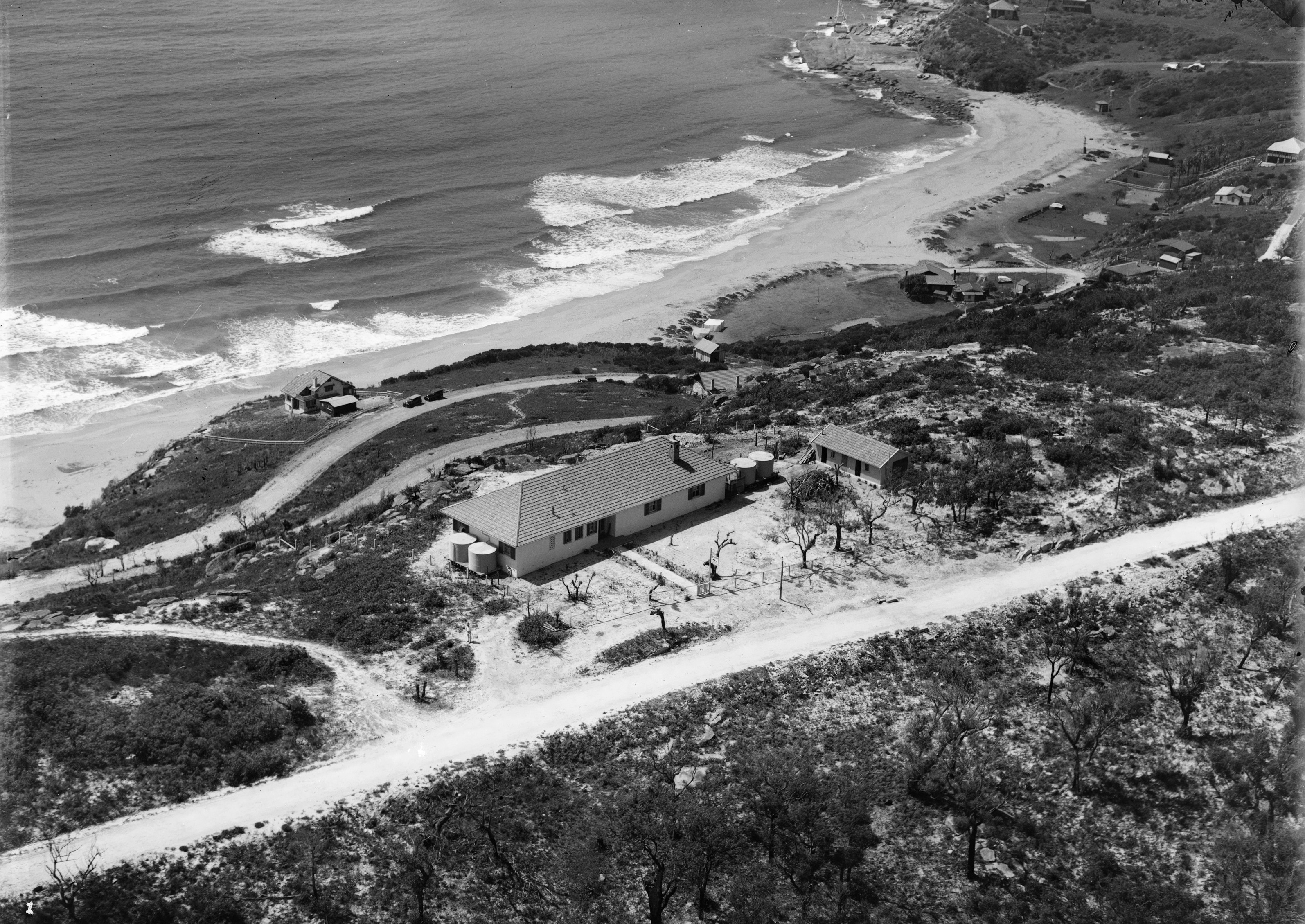
Jonah's when brand new - circa January-February 1929 - Jonahs and Whale to Palm Beach roads Items: c112550003 to c112550014 from album: Item 08: Milton Kent aerial views of Broadway, Palm Beach, Potts Point, Surry Hills, Sydney, ca. 1937 to 1940, courtesy Mitchell Library, State Library of New South Wales
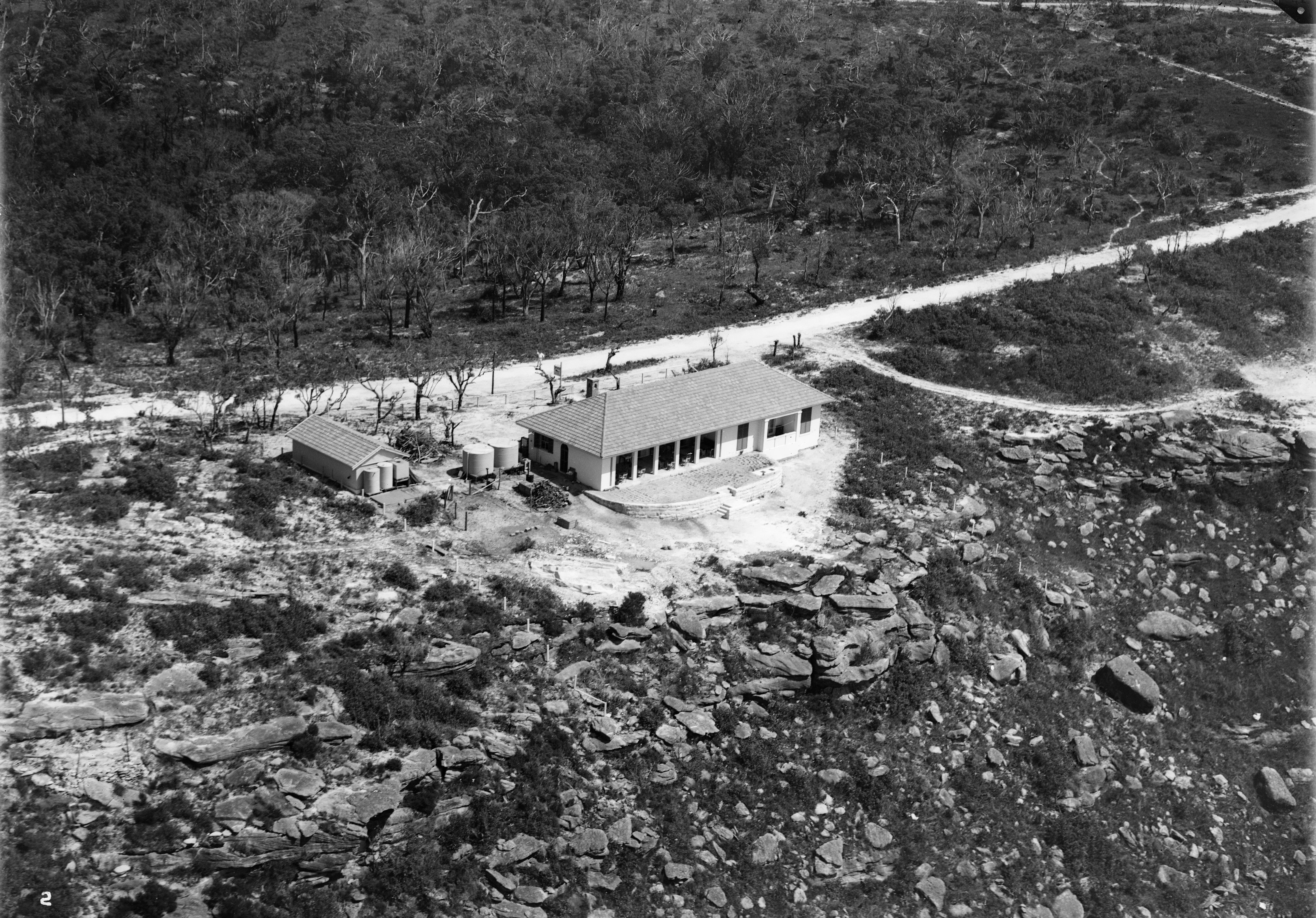
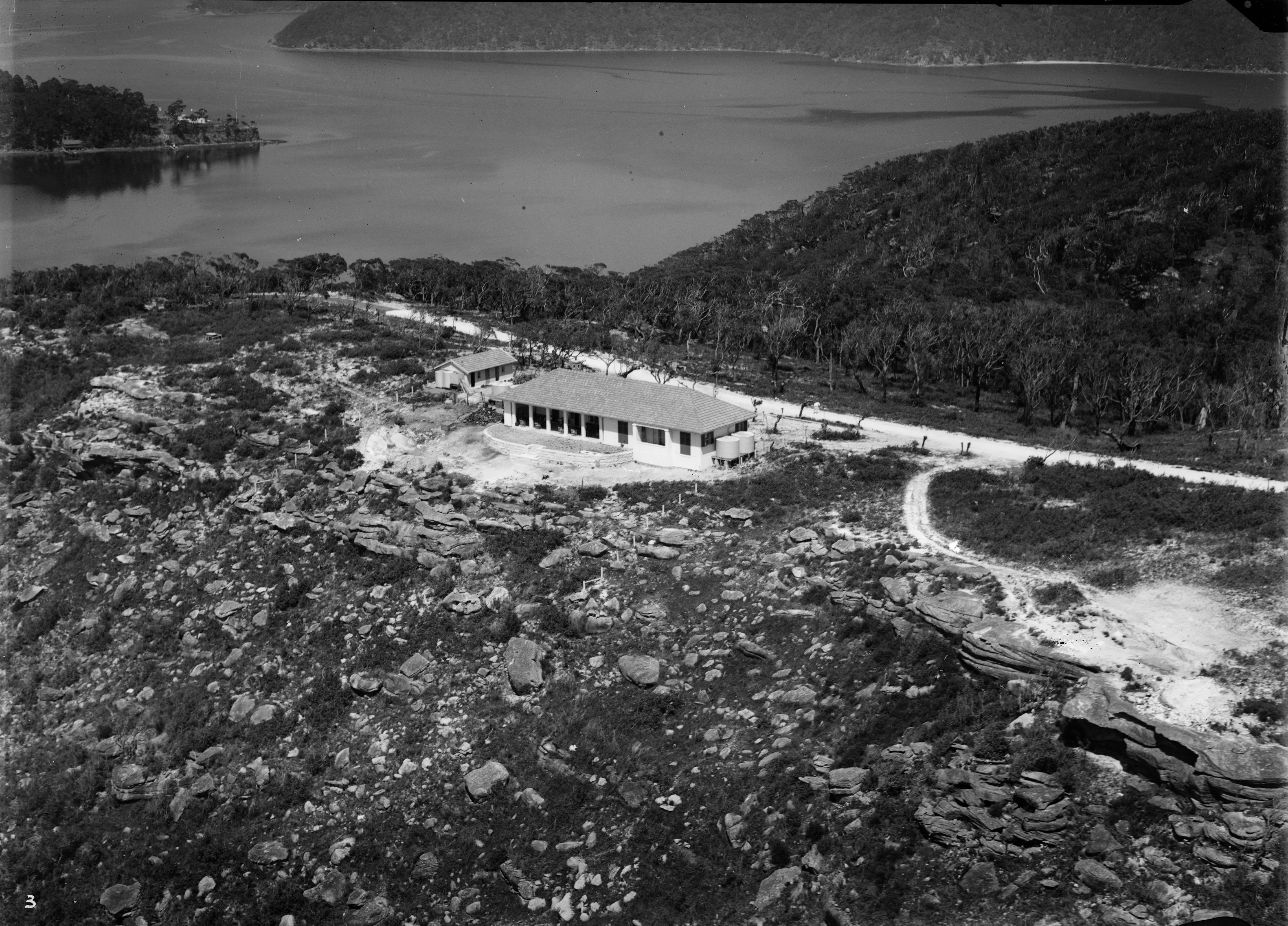
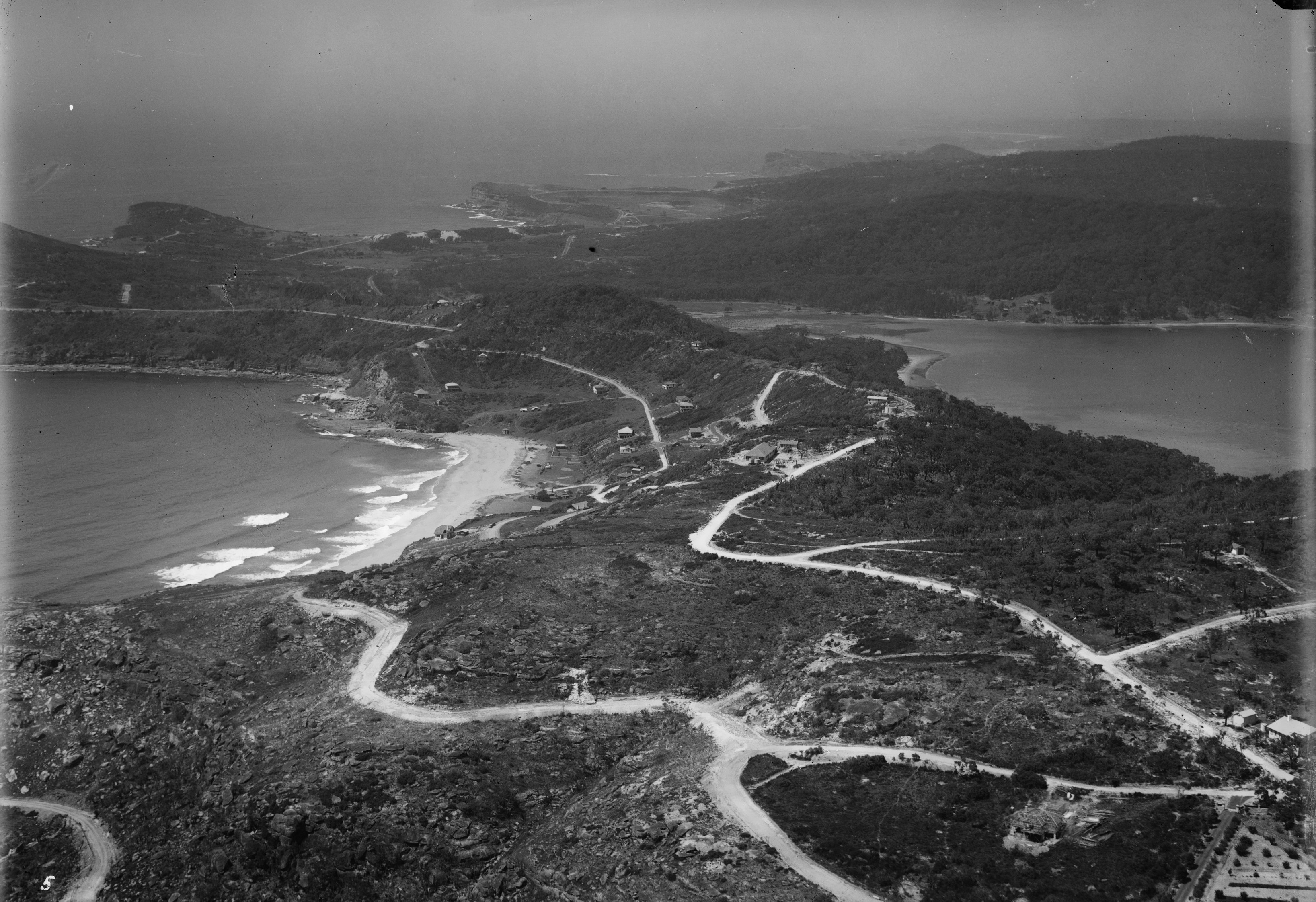
.jpg?timestamp=1645480256283)
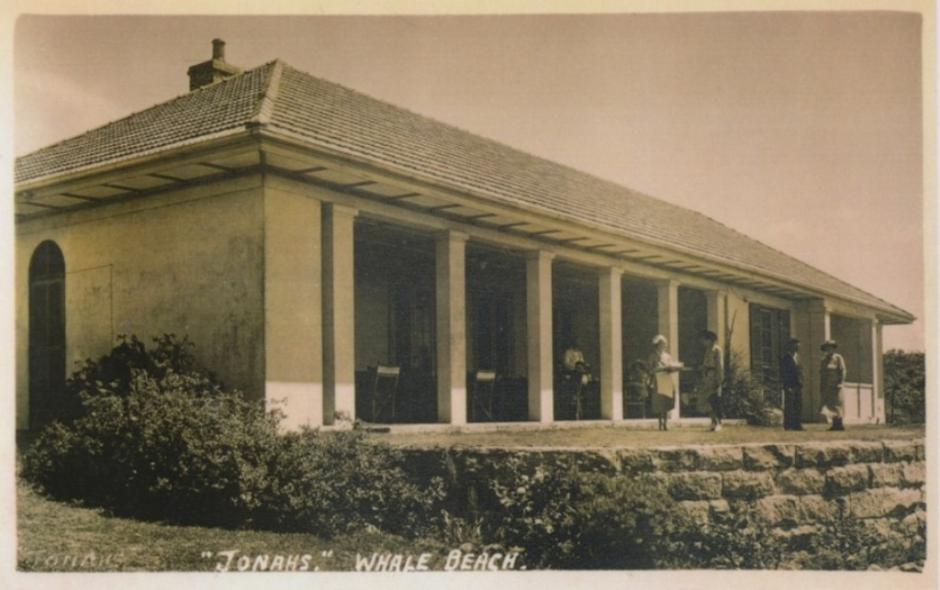
One of Pittwater’s most iconic and popular restaurants, that later became a place you could also stay at, began, alike the Pasadena and Rock Lily, as a Road House during the rise in popularity of mobile excursions. People would come to Whale Beach to camp, to fish, and even to train horses according to one insight found.
While Jonah's was celebrating its opening years, across the hill Careel House was being modified to the bemusement of some diners according to one report.
Jonah's itself has undergone its fair share of transformations all focused on maximising what many visit for - the glorious vistas of Whale Beach. Jonah's remains one of our most dynamic places to eat, to visit and even though now edging closer to being 90 years open, has a history in those who built and ran it that goes back centuries before that.
Constance Isabella Knox Healy-Vidal (born Homan in 1866) had married George Studley Sealy Vidal in July 1889. They had two daughters, Mary and Margaret. Rev. G. S. Sealy Vidal died on 18th of July 1928 and his widow came to Australia to join her daughters, one of whom had married Geoffrey Hughes, youngest son of Sir Thomas Hughes.
A son-in-law, Gilbert, second youngest son of John Hughes, brother of Sir Thomas, and passionate architect was in charge of the designing and construction on part of the three blocks of land purchased by Mrs. Sealy Vidal in 1928 for £750.
Mary Vidal's Certificate of Title was registered on 7th of February 1929 - Vol-Fol 4247-8 - which also provides those to whom this was leased to run during subsequent years. Mrs Vidal would also purchase Lot 24, with that Certificate of Title registered on August 4th, 1930:
.jpg?timestamp=1710383365033)
.jpg?timestamp=1710383395883)
.jpg?timestamp=1710383436814)
.jpg?timestamp=1710383546298)
.jpg?timestamp=1710383482607)
The building was constructed by Palm Beach builder Albert Verrills, with other contractors for some aspects of the build, including the little premises alongside.
WORK IN HAND AND CONTEMPLATED. In the office of Gilbert Hughes and Molony plans are being prepared for a residence at Whale Beach. Advertising. (1928, October 10). Construction and Local Government Journal (Sydney, NSW : 1913 - 1930), p. 5. Retrieved fromhttp://nla.gov.au/nla.news-article109728384
Tenders Accepted: Whale Beach — Residence. — Gilbert Hughes and Molony; Brown Bros., Garden Street, Maroubra. Advertising. (1928, December 12). Construction and Local Government Journal (Sydney, NSW : 1913 - 1930), p. 5. Retrieved fromhttp://nla.gov.au/nla.news-article109729057
JONAHS.
Sydney is wanting in the right sort of place to go to when out on a motor run. Of course the Log Cabin at Penrith is delightful, but it is a very long run; then there is the Green Frog, at Church Point., but the newest and most delightful jaunt will be to Jonahs at Whale Beach, on the way to Palm Beach.
Jonah's is being built for Mrs. Vidol and her daughter. Miss Vidol visited her sister, Mrs. Geoffrey Hughes, of Cranbrook-road. On her return to England her father, who was a clergyman, died, and then the widow and her daughter made up their minds to this new venture, and have built Jonahs, which is sure to become very popular. From the HARBOUR CITY (1929, April 7).Sunday Mail (Brisbane, Qld. : 1926 - 1954), p. 17. Retrieved from http://nla.gov.au/nla.news-article97685030
And for the grounds at the front of Jonah's:
For the erection of a terrace and retaining wall at Whale Beach, Architects Gilbert Hughes and Molony have accepted the tender of Mr. Garner of Palm Beach. OPPORTUNITY REPORT. (1929, May 8). Construction and Local Government Journal (Sydney, NSW : 1913 - 1930), p. 15. Retrieved from http://nla.gov.au/nla.news-article109637505
A Notice in early Warringah Shire Council Meeting records this business is open:
77. Mrs. M. S. Vidal. 23/5/29. Requesting permission to erect two notice boards on the road indicating the way to her business premises at Whale Beach. Application refused.
When motor cars updated coaches and road houses themselves were modernised, keeping broad sweeps of road for these new 'carriages', the destination and the scenery along the way was the point, not food you may have consumed upon reaching there.
Although this emphasis was placed on the original Jonah’s too, and the fare said to be quite tame by today's culinary efforts in being lamb chops with peas or teas with cakes, the lady who began this now world renowned restaurant with its beautiful views, had a reputation for being quite proficient at the sweeter things in life prior to her settling in Australia and opening a much simpler Jonah’s.
A Visit To Jonahs – from The Motor In Australia
August 1st, 1930 – pages 34 to 36 - magazine
The road to Whale Beach is almost too well-known to need describing. Any of the highways that lead to Newport and Palm Beach will bear you to it. After passing Newport the heights of Whale Beach are soon reached.
At the junction of the main road and Surf Road, the traveller will find a signpost by which he is guided right, a little distance up Surf Road he will meet another signpost which points the way along Byna Road to Jonah’s, following the directions, he will arrive at the House of Jonah, which has before it a sign, which is the sign of good cheer. Palm Beach is a little further on, the illimitable blue of the Pacific is in front, and Whale Beach – where, if you are lucky, you may occasionally see a whale – lies below.
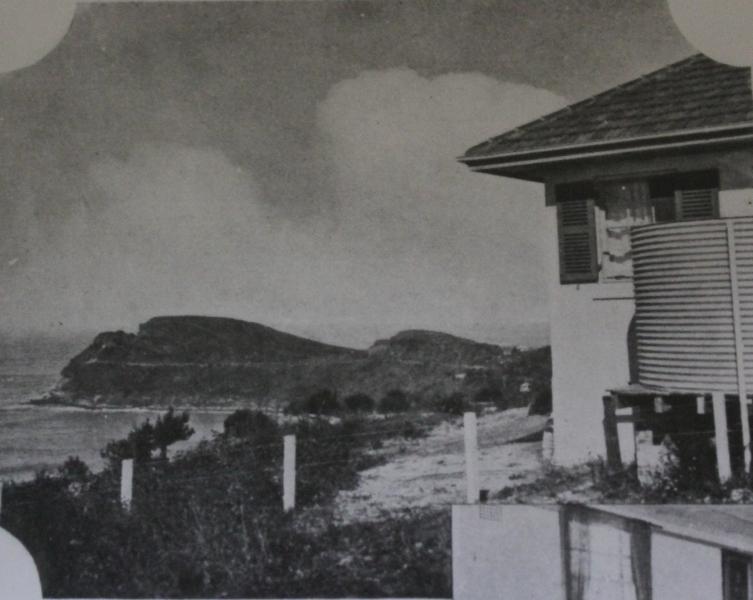
Looking south towards Careel Head from northern end of 'Jonah's'
On the other side is the magnificent creaming of white curlers shooting out of the water, green as pale pal in the shallows, and blue as sapphire in the deeper expanse beyond.
Visitors to Whale Beach areas eager to imbibe the Old World environment of Mrs’ Vidal’s possessions as they are to partake of her tea. To those who desire to get away from the garish high-lights of the ultra modern, the establishment has a charm of its own.
As one strolls around on a tour of inspection the eye ranges from one piece to another in pure delight. There is an exquisite Buhl table; a Chippendale chine cabinet of mahogany, and several Chippendale chairs, a fine bow front Dutch chest in marquetry; a lovely William and Mary chest of drawers on a stand with a century oak chest and joined stool, as oak settee, an especially beautiful mahogany card table, a Chippendale highboy.
In the china cabinet are rare pieces, a Prince Charlie teapot, pieces of Spode, Copeland, Crown Derby and Worcester. On the marquetry chest rests a Nanking vase, and a fine old grandfather clock ticks contentedly to the right of the Dutch tiled fireplace, from which blazing logs radiate the warmest of welcomes.
In one of the halls is another grandfather clock, a Chippendale, with the broken pediment top, and there are other treasures in the Sheraton mirror, old Windsor chairs, a Hepplewhite bow-fronted chest of drawers, a rosewood tallboy, a Jacobean chest of drawers, Queen Anne chairs and fine old family portraits.
The commanding personality of a stern old gentleman in a portrait of the date of 1707 is that of William Sealy, of Somerset. This hangs on the wall in the dining room. He belongs to the family of the Vidals.
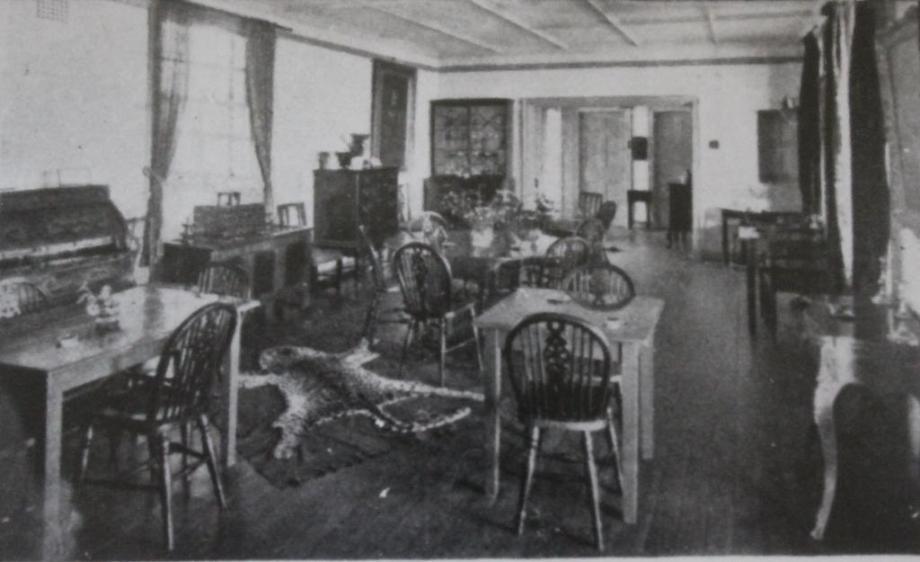
Above: The dining room at 'Jonah's'
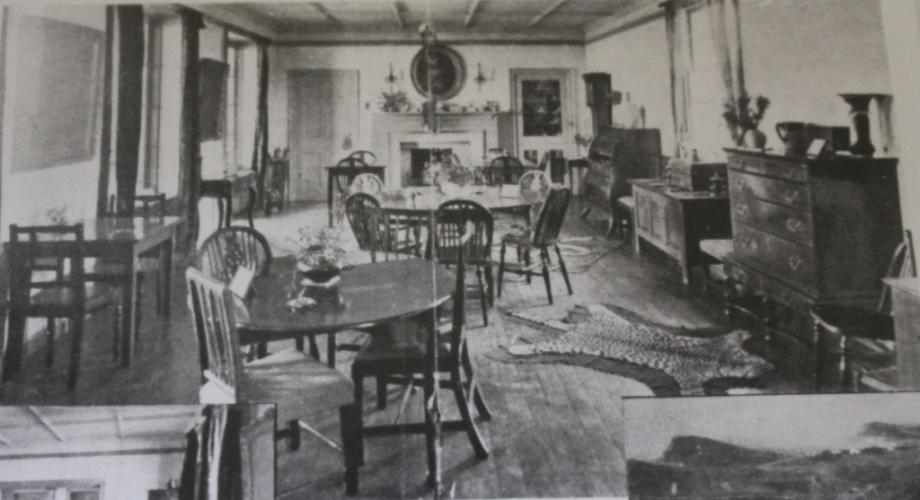
Some of the beautiful antique furniture in 'Jonah's' dining room
Hanging on one of the walls of Jonah’s is a copy of the crayon portrait by Florence Rodway of Captain and Mrs. Hughes eldest child. This picture, when hung in a art exhibition in Sydney, was considered one of the most beautiful child studies by an artist who is famed for her portraits of youth.
Mrs. Vidal has had the new home designed as her own private residence at one end. The house has a creamy buff exterior, and is a modified plan of old Colonial and Georgian architecture. With its green shutters, huge veranda on the seaside, and superb situation, it is in itself a romance of Australian brick and stone.
The interior is designed after the fashion of the famous old road-houses in Britain. The guest rooms include one of the most picturesque dining rooms in the neighbourhood of Sydney.
Painted white and green, the kitchen, with its built in cupboards and array of old Worcester china in the great dresser, is one of the show corners of the house.
And in this lovely Old World English atmosphere the most mundane but all important matter of food is carefully considered and cooked and served in a manner, both for quality and for service, that is memorable. French doors lead onto the spacious logia, where, on fine warm days, meals are served on little green tables with an incomparable ocean view as an appetiser. And if the visitor so desires, some of the products of Jonah’s kitchen, such as the cakes and biscuits, can be purchased and taken away.
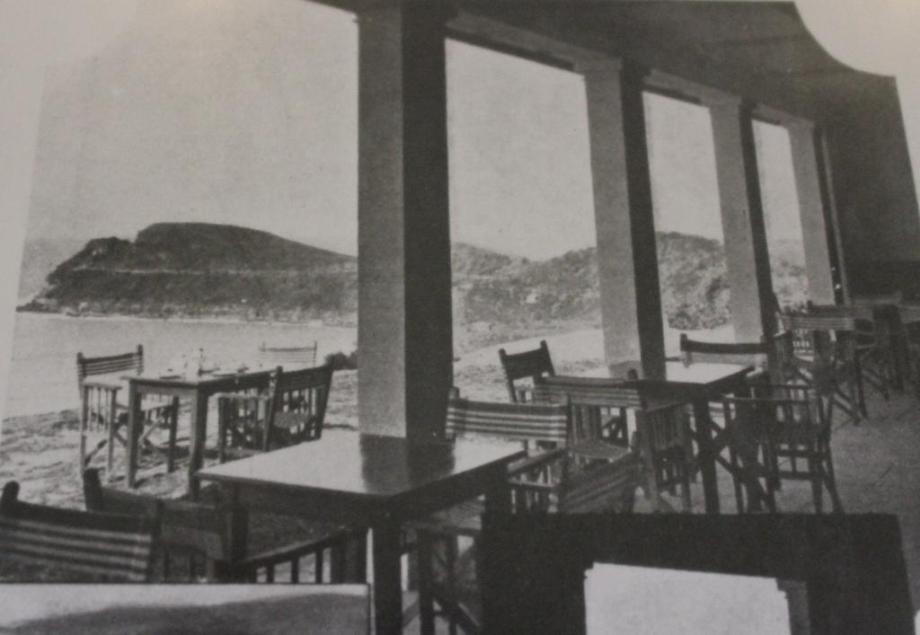
The verandah at 'Jonah's' with its delightful vista over Whale Beach and Careel Head
Mrs. Vidal must have been imbued early with the spirit of optimism, for, when faced with the necessity of doing her part to provide a fitting education for her growing daughters, she saw opportunity in her obstacles, and set herself to carve out a career as a maker of home-made chocolates and sweets.
Her beginning in the Old World rectory in the village of Barnsley, in Gloucester, was an unpretentious one. The first sale consisted of sixpennyworth of peppermint creams. From that grew a connection which extended over the countryside, and even to London, where bon bons made by the gentle hands of the clergyman’s wife were sought after, and the name of Constance Vidal acquired a meaning of its own.
The little girls got their education, and then came the war, with all its trails for the maker of home-made sweets, for sugar was rationed, and there was little or none for delicacies. Nevertheless this stout-hearted Englishwoman battled through. They were different years, but there was a compensation. One of …
(Continued overleaf….)
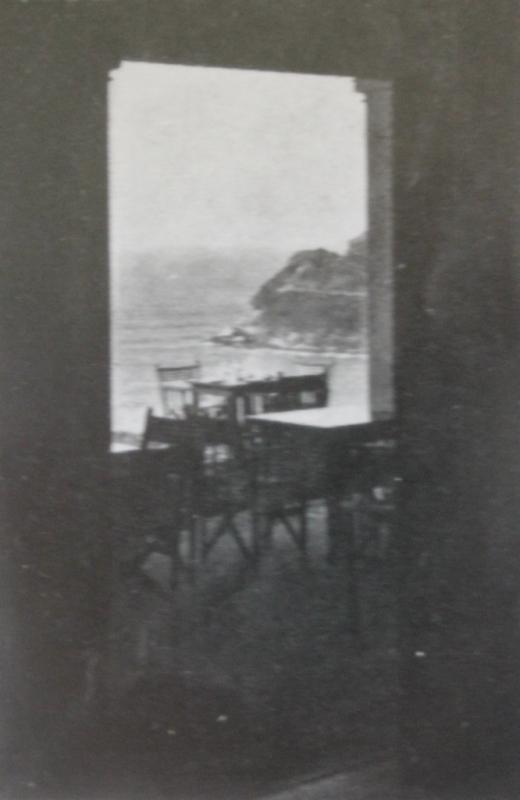
A vignette through one of the French windows of the dining room.
There is a romantic story behind the establishment of the popular road house conducted by Mrs. Vidal, widow of an English clergyman, and her daughter, Miss Mary Vidal, at Whale Beach, one of the most picturesque spots on the way to Barrenjoey, and motorists are fast learning of this bit of transplanted England.
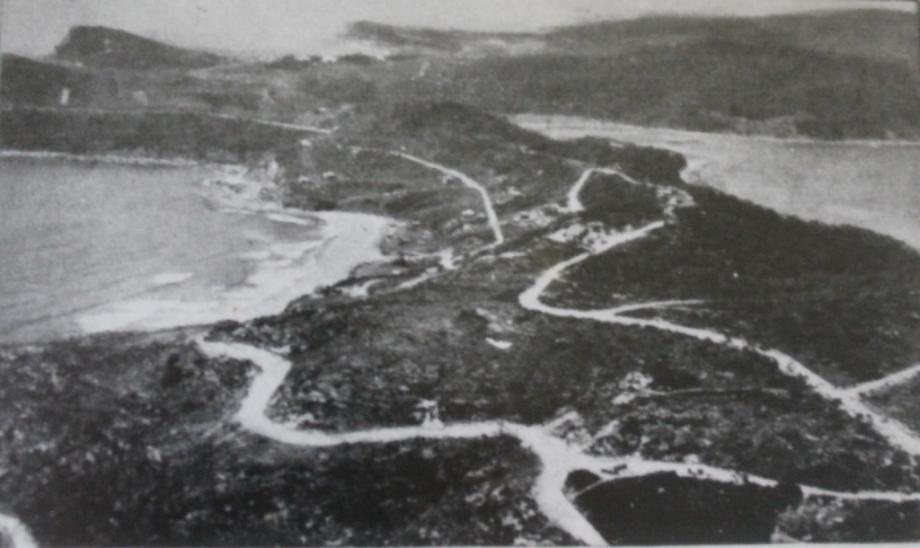
Aerial view looking south, with Whale Beach on the left and Pittwater on right. Bynya Road winding past 'Jonah's' on the crest of the hill in the right.
The key note that began this 'romance' with all of Whale Beach, and for this English family was the 'Great War' - WWI although this was preceded by tragedy. One of the many fine young doctors who went to serve on the French Front during this conflict, Dr. and Captain Roger Forrest Hughes, second son of Sir Thomas and Lady Hughes, died while dressing the wounds of a soldier.
Their youngest son, Geoffrey Forrest Hughes, one of our premier early pilots who trained and then trained others in England, met an Anglican Cleric's daughter, Margaret Eyre Sealy-Vidal, born 1900 (Vidal added on as extra surname through Royal licence - see extras to grandfather Edward Urch Sealy VIDAL, Eyre from her Maternal Grandmother, Emma Harriet EYRE). Her sister, Mary Constance Healy Vidal, who accompanied Margaret from England and was born in 1891, would run Jonah's with her mother.
MARRIED TODAY. CAPT. HUGHES & MISS SEALY VIDAL. A Pretty Wedding
The marriage of Captain Geoffrey Forrest Hughes M.C. A.F.C., son of Sir Thomas Hughes and Lady Hughes, of Cranbrook Cottage Double Bay, with Miss Margaret Eyre Sealy Vidal, daughter of the Rev. George Dudley Sealy Vidal and Mrs. Vidal, of Barnsley Rectory, Gloucestershire, England, which took place at Canice’s Church, Roslyn street Darlinghurst this morning attracted much interest, and many spectators were present to view the ceremony. Sir Thomas Hughes gave the bridge away, and the ceremony was performed by the Rev. Father O'Regan assisted by Rev. Father Eris O’Brien and Rev. Father M. Tansey. During the signing an Ave Maria was sung by Miss Mary Hughes. The bride, an English girl, who met the bridegroom while he was on active service, wore a picture gown of Ivory white charmeuse embroidered In opalescent beads and pearls, showing at each side panels of exquisite lace. The train of brocaded ninon on velvet was mounted on pale pink and finished with lace butterflies and a beautiful veil or old Carrickmacross lace, lent by Lady Hughes, was held In place by a crown of white heather and pearls. The bride carried a sheaf of pale pink and white carnations and wore a string of peals, the gift of the bridegroom.
Miss Mary Sealy Vidal attended her sister as bridesmaid in a smart frock of raven’s wing blue crepe-de-chine with a tabher of silver lace embroidered in saxe blue. The coatee was veiled with the same lace, and the accompanying hat of wine-tinted tulle was massed with feathers of a wine shade. Her bouquet of carnations harmonised exactly. Master Roger Forrest Hughes, son of the late Captain Roger Forrest Hughes AA.M.C. In a rose pink linen suit, was the brides page. Mr. W. F. Owen was best man
Sir Thomas and Lady Hughes held a reception at the Hold Australia after the ceremony. Lady Hughes was beautifully gowned In kingfisher blue and grey georgette, embroidered in sliver and moonlight beads. Her grey hat showed a gentian blue and pink rose, and her bouquet was of pink roses and blue delphiniums. On leaving for the honeymoon, the bride wore a French gown of orange yellow voile, with a smart black cloth cloak, showing panels of leather In orange shades. Her transparent hat was of black tulle. Mrs. R. Forrest Hughes wore a gown of wood-brown marocain and a taupe crinoline hat with flat velvet flowers on the crown.
Among the guests were:— Mrs John Hughes, Miss Mary Hughes, Dr. and Mrs. Curtin, Dr. and Mrs. James Hughes, Dr. and Mrs. Western Maher, Mrs. and the Misses Sealy Vidal. Mr. and Mrs. J. A. Thompson. Lady Braddon, Mrs. Toohey, Miss. Egan, Mr. and Mrs. Kerr. Mr. and. Mrs. Gilhooley. Dr. and Mrs. Odille Maher, Mrs. W. G. Maher, Mr. Cyril Maher, Miss Maher, Judge, and Mrs. Rolin, Mr. Justice and Mrs. Ferguson. Miss Rich. Miss Macrae, Mr. and Mrs. John Lane Mulins, Dr. and Mrs. Collins, Mrs. George Lane Mullins,. Mrs. Bertram Norris, Dr. and Miss O’Gorman Hughes, Mrs. Tom Lane Mullins, Miss M. Barlow, Miss Raine, Mrs. E. Raine, Miss Sylvia Purves, Mr. and Mrs. Leon Lyons, General And Mrs Finn, Mr. Frank Hughes, and Mr. Maurice Hughes. MARRIED TODAY. (1923, January 8). Evening News (Sydney, NSW : 1869 - 1931), p. 6. Retrieved from http://nla.gov.au/nla.news-article118814544
St Canice's, Darlinghurst, could be considered a church given in large part by the Hughes family to the Catholic peoples of Sydney and remained a chapel many of their family services were held at. Other services were held at St Mary's - which also stands, due in some part, to the Hughes family.
SOCIETY WEDDING. HUGHES-SEALY VIDAL.
The marriage of Captain Geoffrey Forrest Hughes, M.C., A.F.C.. son of Sir Thomas and Lady Hughes, of Rose Bay, Sydney, with Miss Margaret Sealy Vidal, daughter of the Rev . G. S. and Mrs. Sealy Vidal, of Barnsley Rectory, Cirencester, Gloucester, England, took place yesterday morning at St. Canice's Church, Roslyn-street, Darlinghurst. The church was beautifully decorated with masses of white flowers interspersed with tall palms. The bride, who was given away by Sir Thomas Hughes, looked most graceful in a beautiful robe of ivory charmouse. embroidered with opalescent beads and pearls, the skirt having panels of real lace. The veil of Carrickmacross lace (lent by Lady Hughes) was worn turned back from her face and held in place with a crown of white heather and pearls. The veil fell almost to the hem of the train, which was of white velvet, showing a raised design on a ground of ninon, and lined with shell pink georgette. She carried a sheaf of white and pink carnations and roses, and wore a pearl necklace, the gift of the bride-groom. Miss Mary Sealy Vidal (sister) was the only bridesmaid. She was gowned in dark blue crepe de Chine, with an apron front of silver lace and blue embroidery. The looses acque coat was of the embroidery to match.
Her small hat of wine-coloured tulle was trimmed with shaded ostrich feathers, and a shaded bouquet was carried. Master Roger Forrest Hughes, in rose pink linen, carried the bride's train. Mr. William Owen supported the bridegroom. After the ceremony Sir Thomas and Lady Hughes held a reception at the Australia Hotel, Lady Hughes receiving in a gown of kingfisher blue and grey georgette, and a grey hat trimmed with pink and blue flowers. SOCIETY WEDDING. (1923, January 9). The Sydney Morning Herald (NSW : 1842 - 1954), p. 5. Retrieved from http://nla.gov.au/nla.news-article16030609
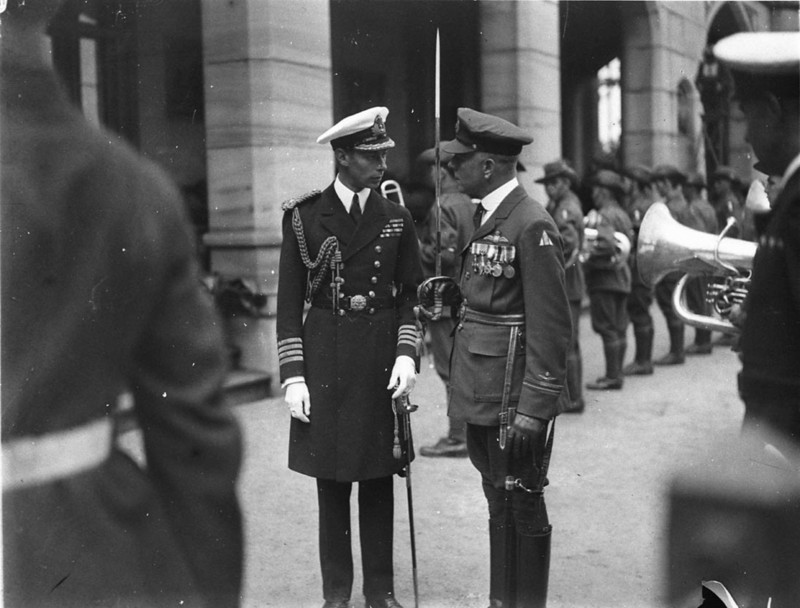
Portrait of Prince Albert, Duke of York (later King George VI) (left) speaking with Geoffrey Forrest Hughes, President of the Aero Club of New South Wales and a former officer in the Royal Air Force who achieved flying ace status during the First World War. Photograph was taken during the Prince's royal tour of Australia in 1927 in which he officially opened the new Federal Parliament building. Photo taken by Sam Hood - courtesy State Library of NSW. Image No.: Home and Away - 6629 - and coincidentally his son, perhaps another visitor to Jonah's ?? (he was also the 11th Governor-General of Australia, from 1945 to 1947 - arriving January 28th, 1945):
DUKE HAS SWIM AT WHALE BEACH SYDNEY.-In contrast to Saturday when he chose North Bondi for his first swim in the surf since his arrival in Australia the Duke of Gloucester chose a secluded spot for a dip yesterday. It was Whale Beach, which lies' off the main highway between Newport and Palm Beach. There was only a few swimmers there when the Duke arrived with his police escort, but two of them recognised him. DUKE HAS SWIM AT WHALE BEACH. (1945, March 13). Barrier Miner (Broken Hill, NSW : 1888 - 1954), p. 1. Retrieved from http://nla.gov.au/nla.news-article49996831
The other attraction, besides being with her daughters, would most certainly have been the delight of grandchildren:
Mrs. Geoffrey Hughes is at present domiciled out of town, though special things like a meeting of the Flying Ball committee bring her back again for a little while. She has taken her two children, Constance and Geoffrey, to Whale Beach, where they will all have a holiday with her mother. THE SOCIAL ROUND. (1931, August 13). Freeman's Journal(Sydney, NSW : 1850 - 1932), p. 16. Retrieved from http://nla.gov.au/nla.news-article118079784
And from this first opening up until present times, Jonah's overlooking Whale Beach has attracted the very best people:
.jpg?timestamp=1428170224221)
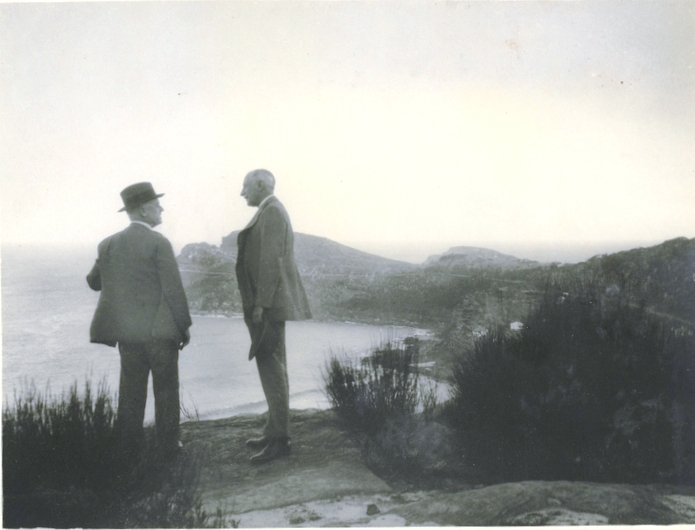
5th of April 1931,: "Herbert and Sir Alexander Hore-Ruthven at Jonah's - I think this is the best photograph of the three": from Album 72: Photographs of the Allen family, 31 January 1931 - 18 October 1931, Album ID : 910181, courtesy State Library of NSW. Images - a3298033h and a3298032h - " In 1966, the family of Sydney solicitor Arthur Wigram Allen donated 51 albums of his photographs to the Library. A compulsive amateur photographer, Allen had recorded his family and surroundings between 1890 and 1934 with 10,000 meticulously captioned black and white snapshots. As an intimate visual record of a well-to-do Sydney family and its milieu, the albums remain without peer." - State Library of NSW
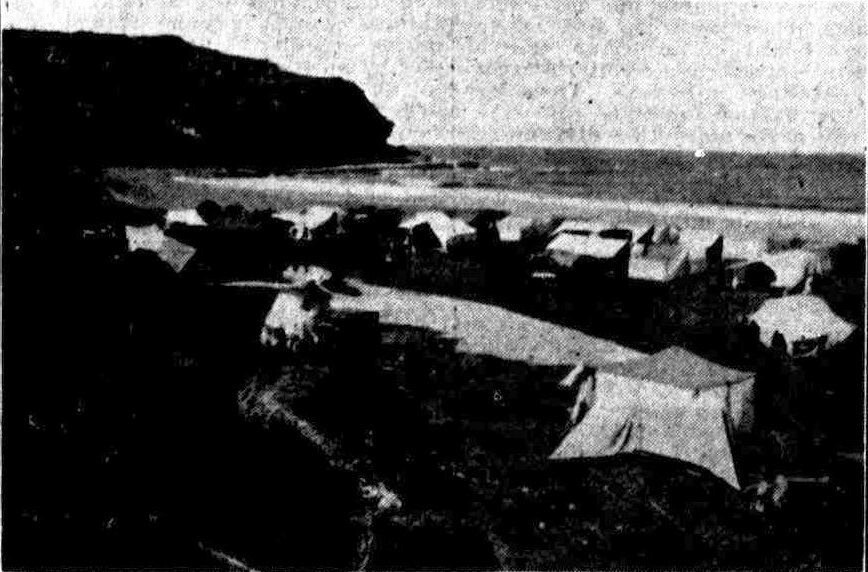
ROAD maps are generally such dull and uninteresting documents with just long black lines marked with dots and names of places. But not so the map issued to those who wish to visit Jonah's, a fascinating road-house on the heights above Whale Beach, near Pittwater. There is .a long green road marked on the cream map, and it shows St. Ives, beside which is sketched the man of the rhyme and his seven wives. Ye Broad Highway passes Manly, "ye habitat of ye sand sheiks," Narrabeen, Avalon, where a golfer is wielding his iron, and on to the beach where a whale is sporting. The sign which swings outside shows Jonah balancing on one leg on a whale's back, with an umbrella up to keep off the water coming from the animal's spout. PEOPLE You Know and People You've Heard About (1929, December 15). The Sun (Sydney, NSW : 1910 - 1954), , p. 4 (SUPPLEMENT TO THE SUN SUNDAY). Retrieved from http://nla.gov.au/nla.news-article225159229
An Easter Encampment - Picture: One of the prettiest beaches to the north of Sydney is Whale Beach. It is a favorite haunt of motor-campers. An Easter Encampment. (1931, April 10). The Land (Sydney, NSW : 1911 - 1954), p. 3. Retrieved from http://nla.gov.au/nla.news-article111602977
MOTORING. AUSTIN CLUB.
The Austin Club will hold a reliability trial and social outing to Whale Beach to morrow A hill climb on a good hill will be Included. Relay and other swimming races will be decided In the rock baths at Whale Beach Cars will assemble at the Art Gallery at 9 15 a m. MOTORING. (1931, November 28). The Sydney Morning Herald (NSW : 1842 - 1954), p. 18. Retrieved from http://nla.gov.au/nla.news-article16819573

Above: [Livintonia Australis ] Whale Beach, Pitt Water, N.S.W. by A. J. Vogan (Arthur James), 1859-1948, photographer. [ca. 1910 - ca. 1915] - courtesy State Library of Victoria - Image No.: 0_306842 - Below - camping on Whale Beach 1930's
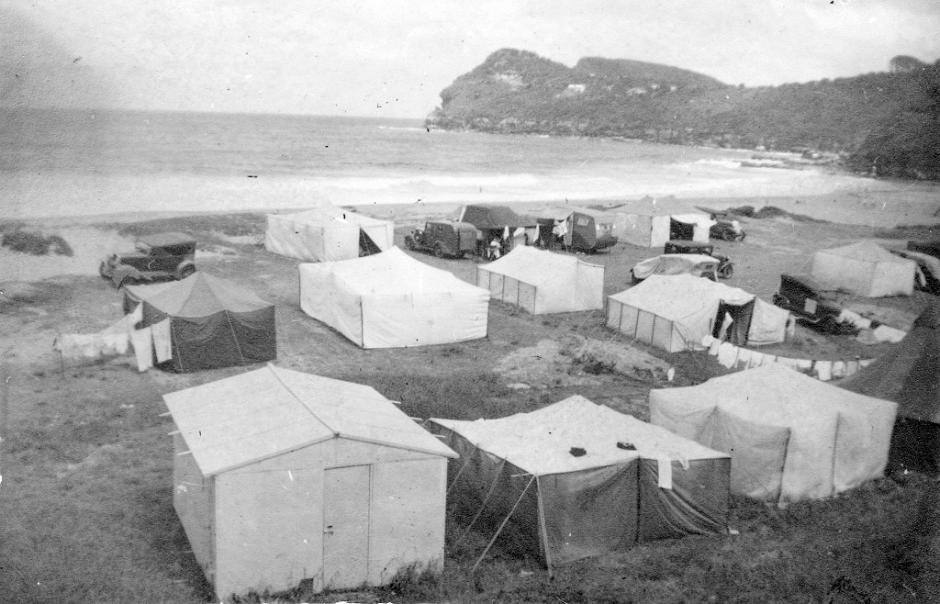
Although all these wonderful family trips to Whale Beach may have been revelled with, apart from one a treasured pet went missing;
DOG-Sydney Silky Terrier light brown and grey last seen wandering near Whale Beach on Saturday answers name Bingo children’s pet reward Phone Vidal Palm Beach 72 or Hughes B7751 Advertising. (1932, January 28). The Sydney Morning Herald(NSW : 1842 - 1954), p. 14. Retrieved from http://nla.gov.au/nla.news-article16836988
The Hughes family and Constance were very community orientated people. Constance would have been 65 in 1931 and due for some quieter times. An article which appears in 1935, raving about her wonderful furniture and how she procured it wisely, places her and Mary in a cottage at Vaucluse. It may be reasonable that, given have spoken to residents who came out from England prior to this and have reiterated that they ran Jonah's during these year's, that Mary too resided for the most part at Vaucluse, looking after her mother. They were however, in the growing in popularity Whale Beach:
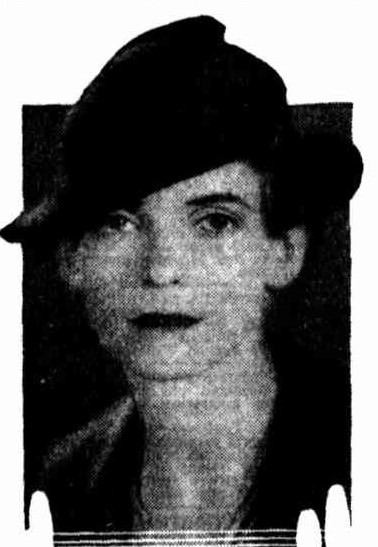
MRS. GEOFFREY HUGHES. Mrs. Hughes is one of the vice-presidents of the St. Vincent's Hospital annual ball, to be held at David Jones' next Wednesday night. MRS. GEOFFREY HUGHES. (1934, April 28). The Sydney Morning Herald (NSW : 1842 - 1954), p. 9. Retrieved from http://nla.gov.au/nla.news-article17053110
PALM BEACH and Whale Beach were inundated with well-known people last Sunday and Monday —most of them sporting very gay beach wear, and in spite of Mj:. Spooner, the bathing suits are charming. Amongst them any I noticed getting a first coat of tan were: The Mick Gearins, the Stivers, Frank and Kath Wade, Teddy Chisholm and Airlie Keep. In the Douglas Doyles' picnic party at Whale Beach were Mrs. Guinness, Enid Hull and James Gait. THE JOTTINGS OF A LADY ABOUT TOWN. (1935, October 13).Truth (Sydney, NSW : 1894 - 1954), p. 27. Retrieved from http://nla.gov.au/nla.news-article169354548
In 1937, Constance passed away and an article and advertisement placed soon afterwards we read:
MISS MARY VIDAL moved back into "Jonah's" at Whale Beach last week, and one day she and her brother-in-law, Mr. Geoffrey Hughes were deeply engrossed in the intricacies of the inventory, when a very hot and bothered young man burst in and asked breathlessly if he could use their telephone. While he was waiting for exchange to answer, he said to them, "What are you going to do about the fire?" They looked up vaguely: "What fire?" they inquired. The young man waved speechlessly out the door and they went out to find a tidy little bushfire blazing merrily a few yards from the house 1 They, had been so engrossed with the moving in that they simply hadn't noticed. They got down to work and by the time that the fire brigade, whom the young man had been calling on their- telephone arrived, the blaze was quelled !
INCIDENTALLY the Geoffrey Hughes are only down from Kosciusko for a few days, and they will return there tomorrow. They told me that there was a fancy dress ball at the hotel recently and the Hughes family went as "Summer Sports." Son Geoffrey, who is the piscatorial expert of the family, naturally went as a fisherman, and as they were going into dinner, they discovered that in his desire for verisimilitude he had Included a newly dead trout in his shirt pockets as part of his costume! Mr. and Mrs. Hughes went as hikers, and in the absence of make up, they painted their faces ail over with lipstick to give the correct puce hue of the sunburnt hiker. It looked grand — but when it came to removing same, it was not so good. The Hughes went round for some time with traces of their artificial sunburn on their faces! MISS PIM PASSES BY (1939, January 9). The Sun (Sydney, NSW : 1910 - 1954), p. 9 (LATE FINAL EXTRA). Retrieved from http://nla.gov.au/nla.news-article229485995
JONAH'S on the heights above WHALE BEACH. MISS MARY VIDAL WISHES TO ANNOUNCE THAT "JONAH'S," WHICH SHE ESTABLISHED 10 YEARS AGO, IS ONCE MORE UNDER HER PERSONAL CONTROL. Rumours that JONAH'S had closed or that its beautiful antique furniture had been removed are untrue. Completely renovated, with enhanced service facilities, and equipped with famous Aga stoves, JONAH'S again offers to its patrons perfect food in perfect surroundings. WITH PROMPT SERVICE. LUNCHEONS TEAS, DINNERS. PHONE: PALM BEACH 72. JONAH'S IS DIFFERENT. Advertising. (1939, April 5). The Sydney Morning Herald (NSW : 1842 - 1954), p. 12. Retrieved from http://nla.gov.au/nla.news-article17591912
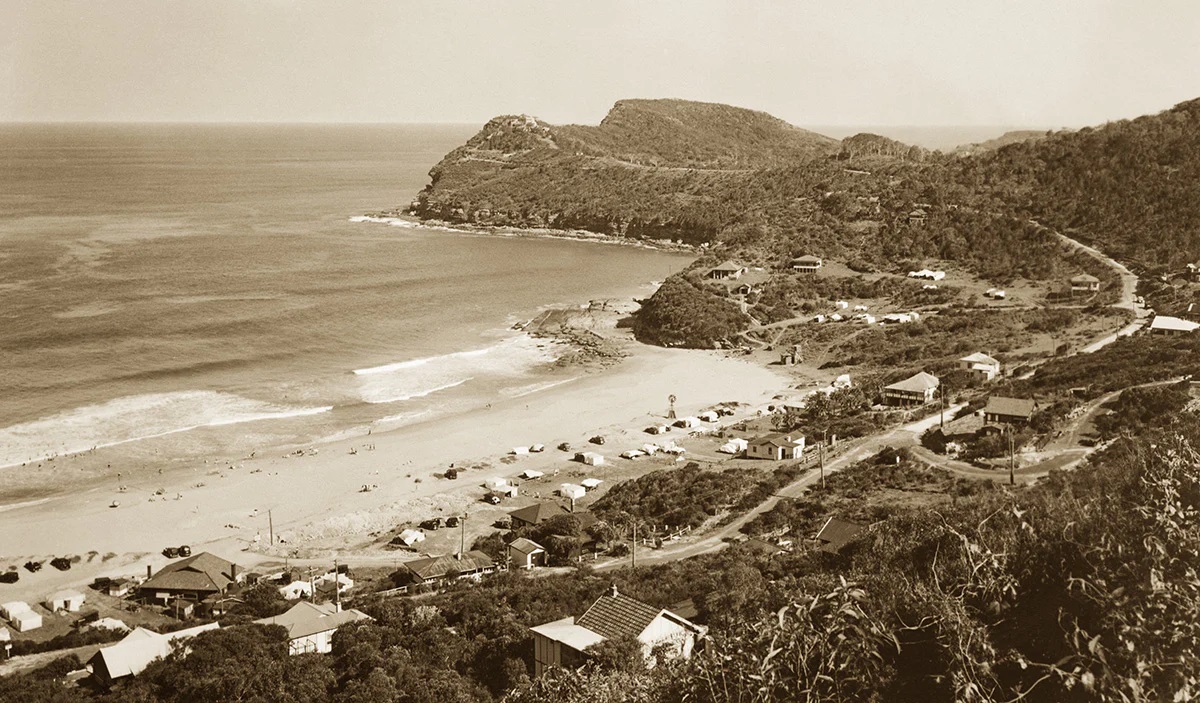
Whale Beach, circa 1943
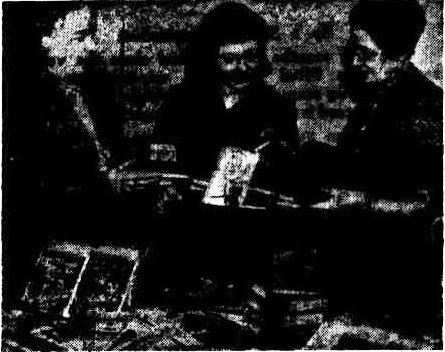 MISSES HILDA LANE MULLINS, CONSTANCE HUGHES, and MARY VIDAL packing Christmas parcels of books, which will be sent to individual members of the Air Force in forward areas. Men can be nominated by relatives, who should forward full names and addresses to the C.U.S.A. Air Force Library Service, 19 Rowe Street Sydney Parcels will include magazines, "digests." Penguins, and bound volumes, to keep up the flow of parcels, gifts of suitable books and magazines can be left at the same address. Women's News BOOK PARCELS FOR AIRMEN. (1944, October 26). The Sydney Morning Herald (NSW : 1842 - 1954), p. 5. Retrieved from http://nla.gov.au/nla.news-article17925345 - Picture to right:
MISSES HILDA LANE MULLINS, CONSTANCE HUGHES, and MARY VIDAL packing Christmas parcels of books, which will be sent to individual members of the Air Force in forward areas. Men can be nominated by relatives, who should forward full names and addresses to the C.U.S.A. Air Force Library Service, 19 Rowe Street Sydney Parcels will include magazines, "digests." Penguins, and bound volumes, to keep up the flow of parcels, gifts of suitable books and magazines can be left at the same address. Women's News BOOK PARCELS FOR AIRMEN. (1944, October 26). The Sydney Morning Herald (NSW : 1842 - 1954), p. 5. Retrieved from http://nla.gov.au/nla.news-article17925345 - Picture to right: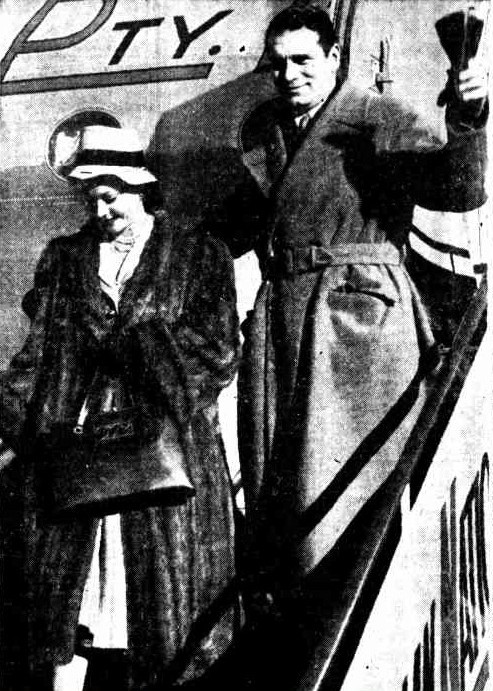
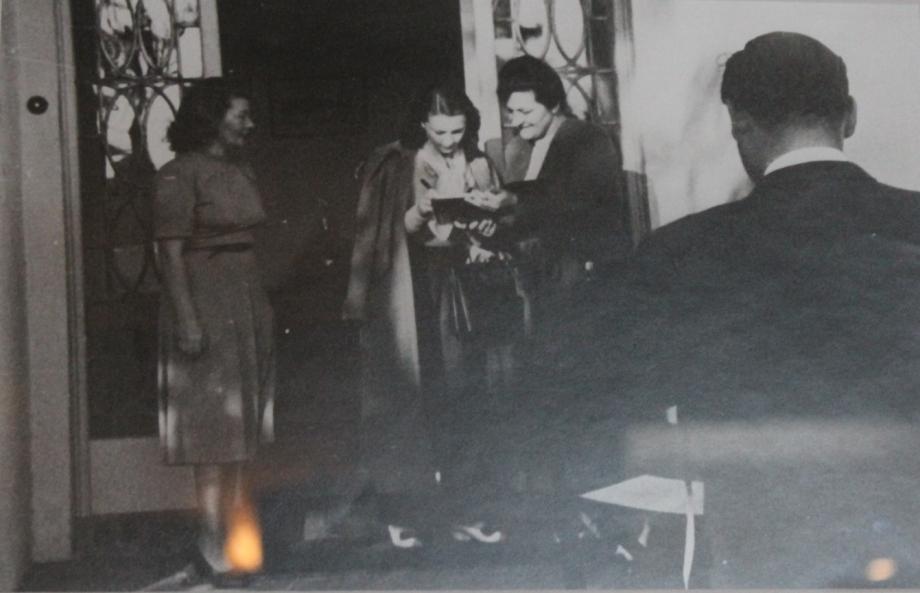
1948 - at Jonahs - Mary on far left (?).
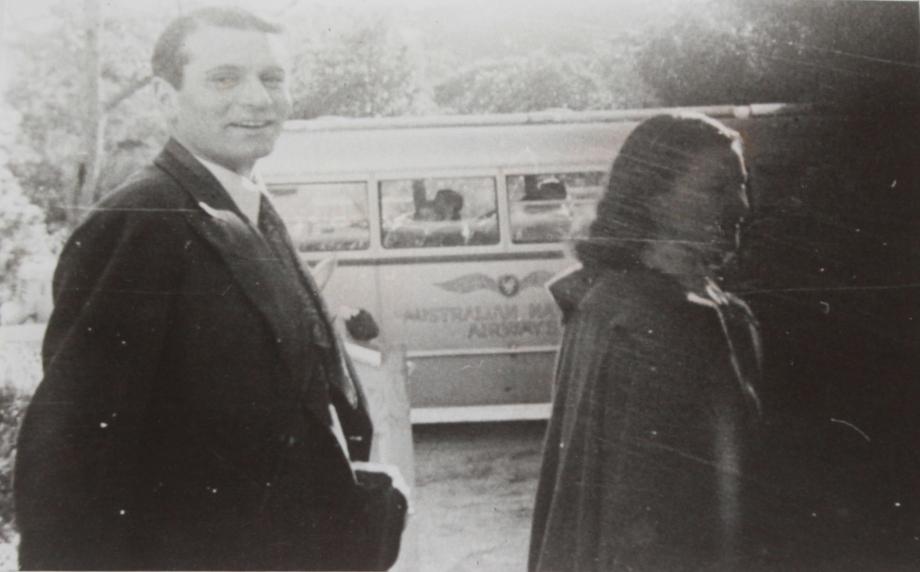
Mary Sealy Vidal was 50 in 1951, had clearly worked hard for decades and was ready to move on.
Whale Beach Restaurant Up For Sale. Jonah's, a restaurant and guest house in Binya Road, Whale Beach, near Palm Beach, was offered at auction yesterday but was passed in for private sale when the highest bid of £7,000 failed to reach the reserve price.
Jonah's is built of brick and has nine bedrooms, bathrooms, and a garage. The restaurant has a wine and beer licence. Willmore and Randal, the auctioneers, did not disclose the reserve price. Whale Beach Restaurant Up For Sale. (1951, July 19). The Sydney Morning Herald (NSW : 1842 - 1954), p. 4. Retrieved from http://nla.gov.au/nla.news-article18217540
9/6/1958. Re Item 8 - Recreation Reserve - Morella Road Whale Beach, - Application by A. M. Belot. for permission to construct septic tank effluent disposal trenches on reserve adjacent to "Jonahs", Bynya Road, Whale Beach; Resolved, - That this matter be referred to the Chief Health & Building Inspector and the Shire Engineer to report on the feasibility of whether it is possible to pipe the effluent from "Jonahs" under the reserve/road to the beach. (Crs. Reynolds/ McClelland).
It is during the 1950's that the road house became a 'restaurant'. Dining out during the 1950's was considered a luxury and fine cuisine became the order of the day at Jonah's. The surname of 'Belot' derives from Old French, influences which have always been synonymous with top of the mark menus. Older literature on this period mentions suited and bow tied formal male waiters, waitresses in maids outfits, very stiff backs and not a drop of the best wines spilled.

Jonah’s Restaurant, 69 Bynya Road, Whale Beach, exterior and interior, November 1959 photographs by Max Dupain courtesy State Library of NSW

During the 1960's renovations, including the installation of a dance floor and entertainment after dining, termed a 'nightclub' by some, may have distressed S. Harris if that person was still around. Gowns and tuxedos were worn by patrons. This decade is also when rooms became available for patrons or holiday visitors with the construction of the wing for this accommodation as well as a cliff-top pool. People still speak of taking youngsters to the pool at Jonah's during daylight hours so more alfresco menus may have complimented and attracted resident as well as visiting clientele.
An Italian restaurant in the '70s, a new name as Villa Jonah Al Mare, new owner in Oswald Fabris, brought white linen, crystal and chandeliers and wonderful Italian traditions. Australians, with so many cultures now infusing their palate, were becoming more serious about their food and recognition of the fine fare at Jonah's.
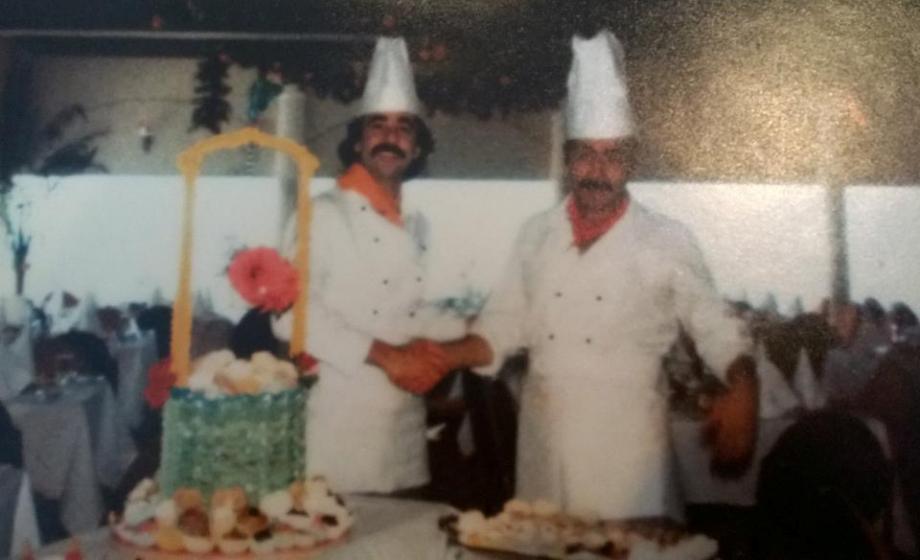
Above: Pasquale Poccia as Chef of Villa Jonah Al Mare circa 1978. He and assistant Tony Lugue were awarded a Certificate by The International Wine and Food Society in 1980. That's Pasquale on the left. Pasquele is now in Connecticut at Pasquele's Osteria!
Ali Pinnington, who began in the Jonah's office in 1979, and worked at Jonah's, in between stints at The Pasadena and Salt, until April 2011, recalls it was 'men only' on the floor when she began - dinner suited and with cummerbunds.
In the early 1990's Jonah's changed hands and was owned by three gentlemen, one of whom lived quite nearby. Fund manager Iain Gray, stockbroker Peter Burrows and Colin Ryan were partners in purchasing Villa Jonah Al Mar. After spending two years refurbishing and modernising the premises by installing floor to ceiling windows, extending outdoor areas and placing a lawn where the pool had been, complete with new tables and chairs and apparently when a sandstone cubby-house cave originally under the premises was filled with concrete to support new expansions, a fondly remembered play area of the Hughes children, a more open outlook Jonah's re-opened on January 1st 1994 with the marriage of Jane Ferguson, sister of the lady who later married Prince Andrew, Sarah.
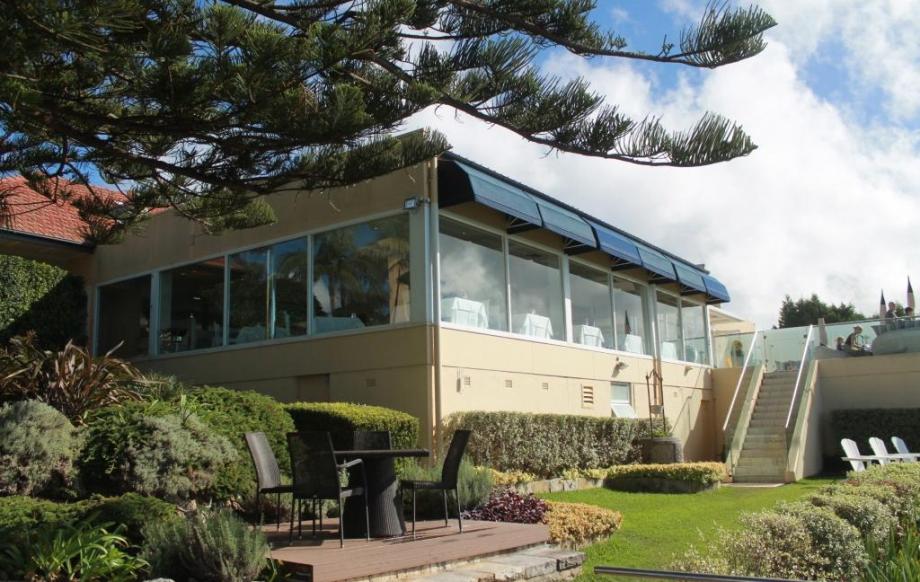
dining room extension juts out from original length of building - behind.
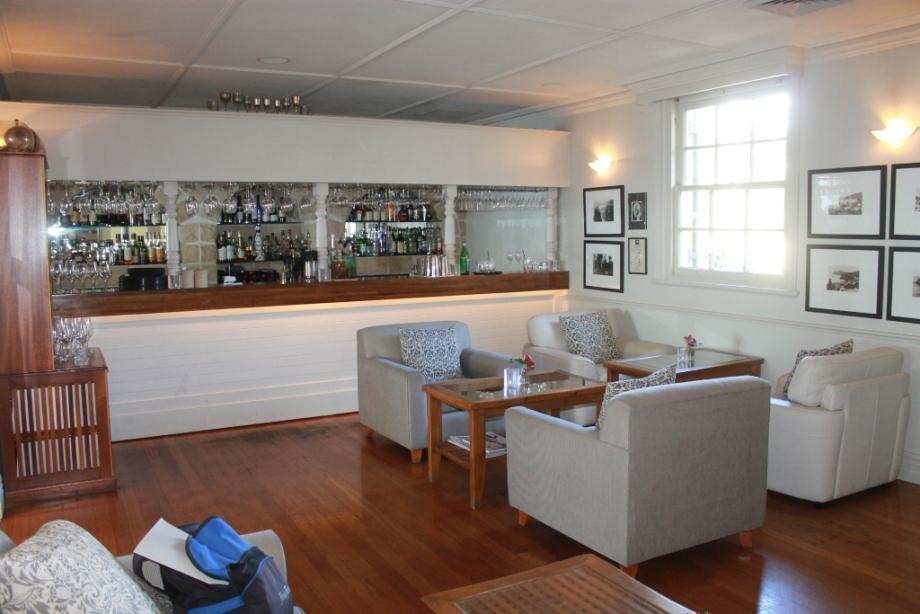
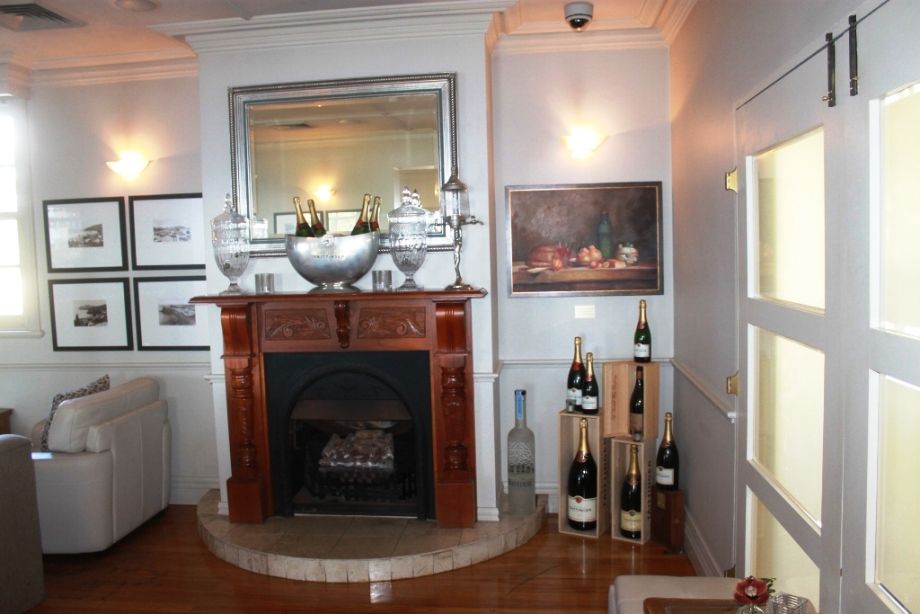
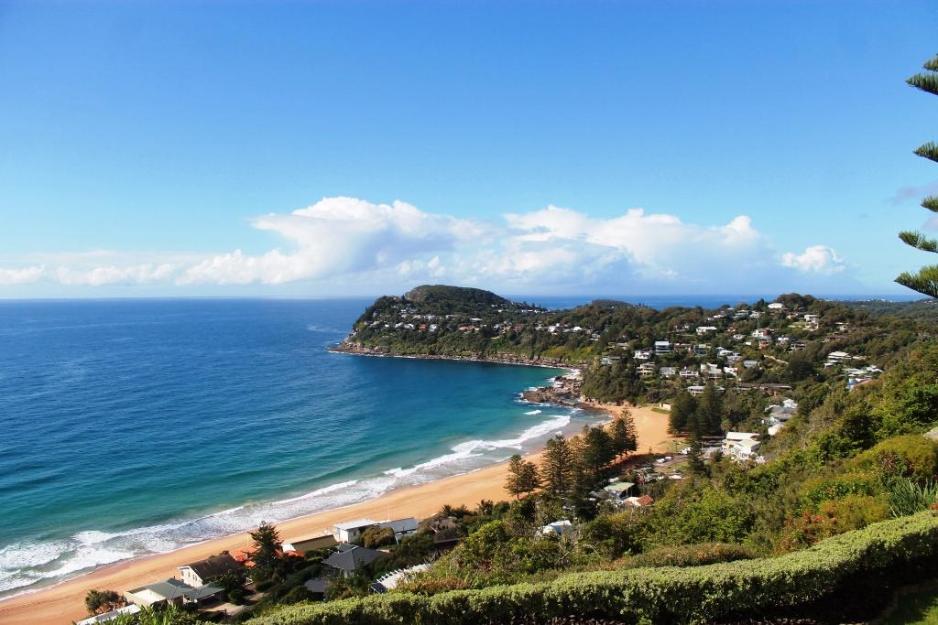
Above: The view from Jonah's this week - April, 2015. Below: Outdoor comfort to enjoy it from.
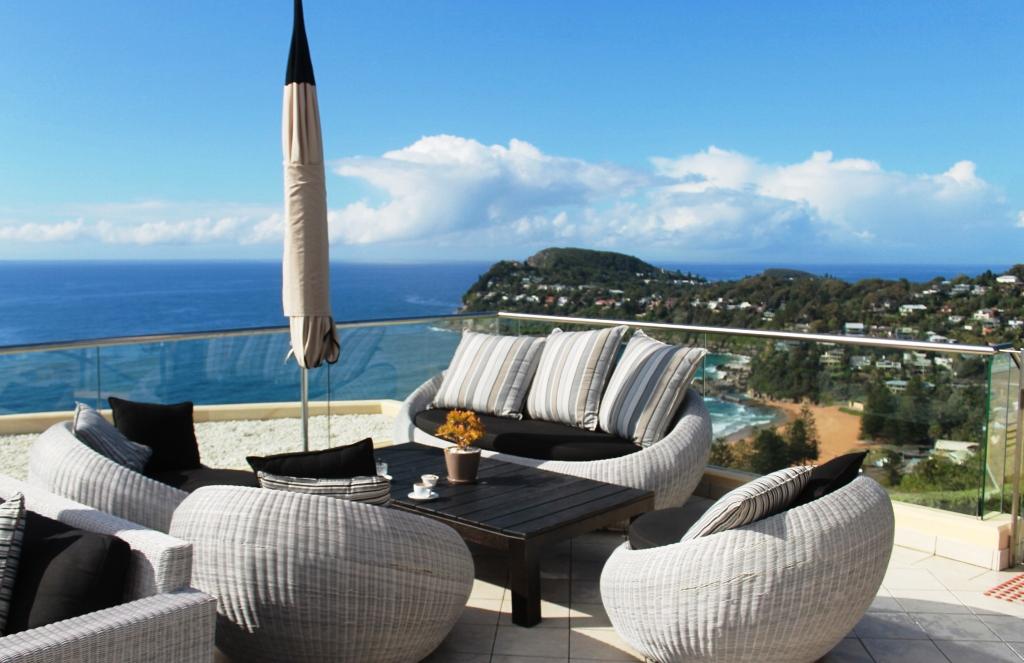
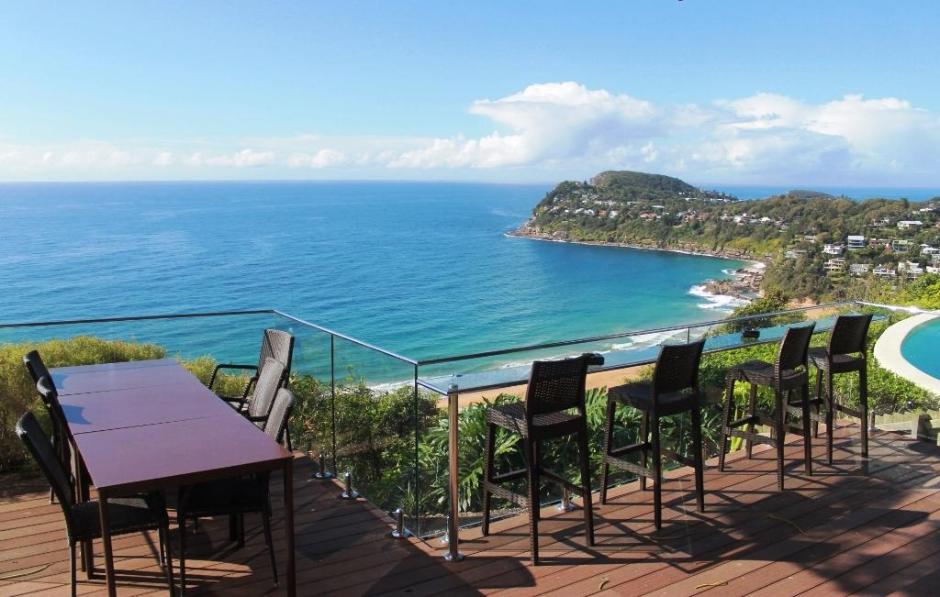
References and Extras:
A New Roman Catholic Church. ST. CANICE'S, DARLINGHURST.
(See illustrations on page 19.)
In this issue we publish engravings of St. Canice's Church, Roslyn Street, near Rushcutter's Bay, Sydney, which is the most recently completed addition to the architecture of the Roman Catholic Church in and around Sydney. The new church, which is regarded as one of the finest in Sydney, cost something like £13,000, the bulk of which sum was provided by the family of the late Mr. John Hughes (Knight of the Order of St. Gregory), who himself gave the site for the building, together with a donation of £3500, which, with other donations made by surviving members of Mr. Hughes's family, reduced the share of the cost of the church borne by the parishioners to about £5000. The church, which is 120ft long and 51ft wide, including the aisles, is built of brick and stone, in the early English style of architecture. The interior is lined with cream-colored bricks ; while the arches overhead are supported by elegant pillars of Pyrmont stone. The design of the sanctuary is at once simple and chaste ; and, as it is intended to replace the present temporary plain glass of the windows with stained glass in pictorial designs, the generally pleasing effect will, doubtless, be improved. One of the special features and chief adornments of the interior is a white marble altar in " the lady chapel." This was executed by Signor Fontana. The architect was Mr. John Barlow, of Lyndhurst-chambers, who personally superintended the erection of the structure. The contractors for the various portions of the work were Messrs. John Mahoney (basement and retaining wall), A. B. Prout (brick and stonework), and A. J. Waterson (finishing- trades).
Some weeks ago Cardinal Moran blessed and formally opened the church in the presence of a large congregation, being assisted by Dr. Carroll, V.G., parish priest of the Sacred Heart district, in which the church is situated, together with a large number of the general clergy. High mass was celebrated by Monsignor Verdon, President of St. Patrick's Seminary, Manly. Dr. O'Brie npreached an eloquent sermon, in the course of which he pointed out the happy choice made in dedicating the church to St. Canice, whose name was one of the brightest and most honored in Ireland's bead-roll of saints and heros. St.Canice was born in Ireland in the year 615, and finished his remarkable career in 599. He was the chief patron saint of the city of Kilkenny, and his festival was observed with as much honor in Australia as in Ireland.
Dr. Carroll made a statement of the financial position of the Sacred Heart parish and of the St.Canice building fund, in the course of which he alluded to the benefactions of the Hughes family.
Cardinal Moran, who, owing to a severe cold, had to leave before the termination of the proceedings, had prepared specially for the occasion a Sketch of "the life of " Saint Canice, Abbot and Confessor ." Copies of this were distributed among the members of the congregation at the conclusion of the ceremony. It should be mentioned that St. Canice's Church is intended to serve as a chapel of ease to the old church of the Sacred Heart, Darlinghurst.
St. Canice's Roman Catholic Church, Darlinghurst, Sydney.
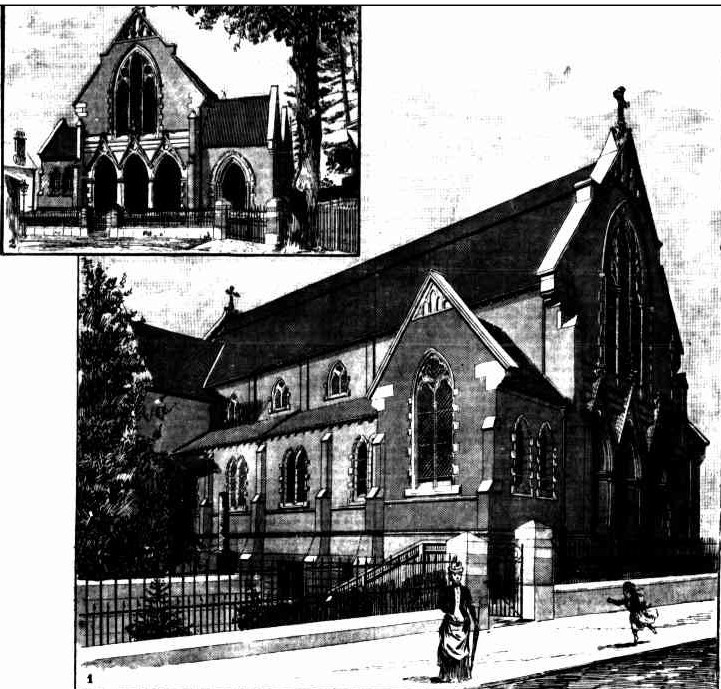
1. General view. 2. Front entrance.
A New Roman Catholic Church. (1889, July 20). Australian Town and Country Journal (Sydney, NSW : 1870 - 1907), p. 9. Retrieved fromhttp://nla.gov.au/nla.news-article71121226
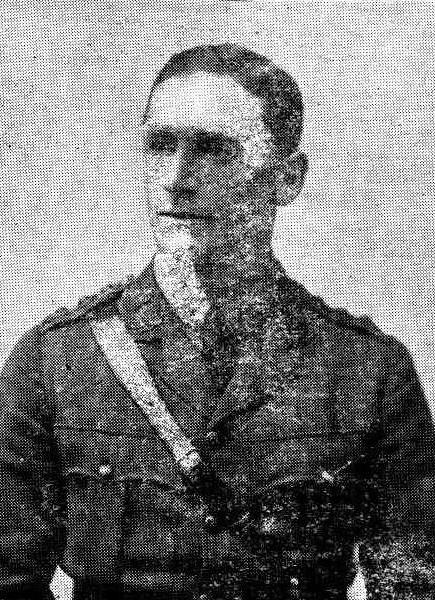 DEATH OF CAPTAIN ROGER FORREST HUGHES.
DEATH OF CAPTAIN ROGER FORREST HUGHES.
Picture: The Late Captain Roger Forrest Hughes
THE GALLANT END OF A BRILLIANT CAREER.ANOTHER RIVERVIEW HERO The long list of heroic Australians who have died for their country has been added to by the death of Captain Roger Forrest Hughes, one of the many brilliant young Catholic soldiers who hastened to play a man's part in the present war. The sad intelligence was cabled to Sir Thomas Hughes, M.L.C.. K.C., S.G., and Lady Hughes, parents of the young officer, on Thursday last, by another son, Flight Lieutenant Geoffrey Forrest Hughes, of the Royal Flying Corps, who was with his brother at the end.-The late Captain R. F. Hughes was a gifted student of St. Ignatius' College who by reason of his devotion to duty and his loyalty to his home and religion, maintained the highest ideals of a true Catholic son and citizen. Courteous and considerate of the feelings and welfare of all who were honoured with his friendship the personal popularity of Captain Hughes in civil and military circles was unbounded He was only 26 years of age, yet he had established a brilliant record. At St. Ignatius' College, Riverview, for his diligent application to study he won two University medals. From his Alma Mater he went to the Sydney University, and here fresh honours were achieved when he went through the arts as well as the Medical course. It was only last year he took the degrees of Bachelor of Medicine and Master of Surgery. Apart from his studies, Captain Hughes was a prominent figure in the University sports and as secretary of the University Union his enthusiasm did much to promote the success of that body.
After the young doctor left the University he was attached to St. Vincent's Hospital where he soon became an established favourite not only with the medical staff but with the Sisters of Charity and the many patients he cared for so devotedly there. The call of war came and was heard, and Dr. Hughes enlisted and went to No. 4 General Hospital at Randwick for a time, and subsequently to Liverpool, and then to the Warren Camp at Marrickville. He sailed for England in due course; and subsequently left there for France, where he had been but a few weeks when he met his death. Heedless of personal danger on the field of battle, Captain Roger Forrest Hughes thought only of the safety of others. The firing line was his selection, and we are told that he was killed while on duty dressing the wounds of soldiers who had been struck down Captain Hughes was married shortly before he left Australia to Miss Eileen Maher daughter of Mr. M. E. Maher, of Collaroy Station, in New South Wales.
His Grace the Archbishop of Sydney referred sympathetically to the death of the young officer when officiating at the distribution of prizes in connection with the Christian Brothers' College, Waverley on Friday. "That very day" said his Grace the Archbishop, the sad news had been received of the death of a gallant young Sydney doctor, Dr. Roger Forrest Hughes, the son of one of their most esteemed public men. The brave young Australian had his only brother, a member of the Royal Flying Corps, at his side when he gave his young life for his country, in a just cause. Such an example— one among many examples of patriotism combined with courage should strengthen them - their resolve to do their duty—to do their very best-so as to help in winning the war. The young men of their faith had gone to the front from Australia in thousands.'
DEATH OF CAPTAIN ROGER FORREST HUGHES. (1916, December 21). Freeman's Journal (Sydney, NSW : 1850 - 1932), p. 19. Retrieved from http://nla.gov.au/nla.news-article115592831
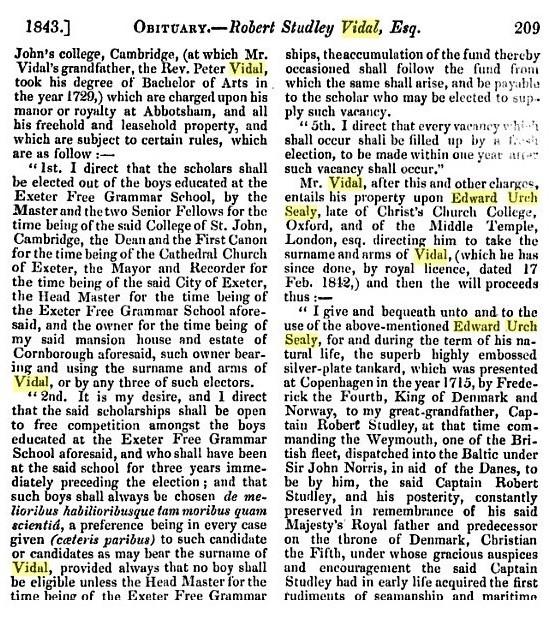
Vidal added onto Sealy to become Sealy Vidal or Sealy-Vidal from: Gentleman's Magazine, and Historical Chronicle, Volume 54 (Google eBook) - Sylvanus Urban (pseud. van Edward Cave.) - Edward Cave, 1843 - Great Britain at: HERE
George Studley Sealy Vidal
Presidents of the Oxford Union Society
Past Presidents of the Oxford Union at the University of Oxford are listed below, with their college and the year/term in which they served, if known. The Oxford Union Society, commonly referred to simply as the Oxford Union, is a debating society in the city of Oxford, England, whose membership is drawn primarily from the University of Oxford. Founded in 1823, it is Britain's second oldest University Union (after the Cambridge Union Society), and has gained a worldwide reputation for its debate, having trained politicians from Britain and other countries.
1885 Hilary George Studley Sealy Vidal New College
Full name: George Studley Sealy-Vidal: Born: 12th February in Bideford, Devon [registered in Bideford, March, 1862], Died: 18th July 1928. Teams: Winchester College (Miscellaneous: 1881) - Cricket
Football (Soccer) Club Career - Club(s) Played for Oxford University AFC.. Distinctions Younger brother of Walpole Vidal and William Vidal
Vidal, Edward Urch Sealy, is. Edward Sealy, of Bridgewater, arra. Christ Church, matric. 15 May, 1834, aged 17 ; B.A. 1838, M.A. 1841, bar.- at-law, Middle Temple, 1842, assumed the additional surname of Vidal.
Vidal, George Studley Sealy, 8s. Edward, of Comborough, Devon, arm. New Coll., matric. 15 Oct., 1881, aged 19; scholar 1881-5, B.A. 1885, M.A. 1888.
Vidal, Owen Alexander, is. Alexander Thomas Emeric, of Worthing, Sussex, arm. Trinity Coll. , matric. 24 March, 1860, aged 19 ; B.A. 1863. [15]
Vidal, Robert Walpole Sealy, 33. Edward Archibald, of Cornborough, Devon, arm. Christ Church, matric. 23 May, 1872, aged 18 ; a junior student 1872-9, B.A. 1876, M.A. 1879, vice-principal Ely College 1878-81, vicar of Abbotsham, Devon, 1881.
Vidal, Robert Wellington, 4S. Francis, of Sydney, Australia, cler. St. John's Coll., matric. 16 Dec, 1862, aged 19; B.A. 1866, M.A. 1869, held various curacies 1868-81, vicar of Bayford, Herts, 1881. - From Oxford Journal Oxfordshire, England
STOKE ABBOTT is a parish and village, 6 miles north from Bridport terminal station on the Great Western railway, 2 west from Beaminster and 7 from Crewkeme, in the Western division of the county, hundred and union of Beaminster, petty sessional division and county court district of Bridport, rural deanery of Bridport (Beaminster portion), archdeaconry of Dorset and diocese of Salisbury. The church of St. Mary the Virgin is a stone building, consisting of an Early English chancel, nave of three bays, north aisle, south porch and a square western tower with a peal of 5 bells, which chime every three hours: it contains an ancient Norman font: on December 8, 1828, the church was struck by lightning: the church was restored in 1878 by subscription, and a north aisle added in the place of a small north transept; a stained window was erected in the chancel by Mrs. Symes, of Charmouth, in memory of her husband; also one to William Udal esq. and Mary Anne, his wife; and the church was reseated with open benches: there are sittings for 210 persons. The living is a rectory, tithe commutation £420 yearly, average £315, gross income £415, net £320, and 51 acres of glebe, with residence, erected in 1864; in the gift of New College, Oxford, and held since 1892 by the Rev. George Studley Sealy Vidal M.A. formerly chaplain of that college. There is a Congregational chapel. Beaminster Union House is in this parish. The principal landowners are John Russell Cox esq. William Colfox esq. of Westmead, Bridport, the Gollop family, Netherbury, and M. Story-Maskelyne esq. J.P. The soil is sandy loam; subsoil, sandy loam. The chief crops are wheat and barley. The area is 2,327 acres; rateable value, £3,720; in 1891 the population was 499, inclusive of 67 officers and inmates of the Beaminster union workhouse and infirmary. National School (mixed), erected in 1858, & a class room has been added for 100 children; average attendance, 72. — Kelly's Directory of Dorset (1895) from:http://forebears.co.uk/england/dorset/stoke-abbott
Rev. Sealy Vidal's family members: wyndhammarsh.co.uk/genealogy/tree=Cledwyn
VIDAL - October 16, 1937, at a private hospital, Constance Isabella Knox Vidal, widow of the late Reverend G. S. S. Vidal of Barnsley Rectory, Gloucestershire, England, and mother of Mary Sealy Vidal, and Margaret Forrest Hughes, aged 71 years. Requiescat in pace. Family Notices. (1937, October 18). The Sydney Morning Herald (NSW : 1842 - 1954), p. 10. Retrieved from http://nla.gov.au/nla.news-article17399297
VIDAL-The Funeral of the late CONSTANCE ISABELLA KNOX VIDAL will leave St Mark's Church, Darling Point, THIS MONDAY, after a service commencing at 10 a.m., for South Head Cemetery - Mrs P KIRBY and SON LTD, Motor Funeral Directors. 265 Elisabeth Street. Phone M2221 2 Sydney. Family Notices. (1937, October 18). The Sydney Morning Herald (NSW : 1842 - 1954), p. 9. Retrieved from http://nla.gov.au/nla.news-article17399315
IN THE SUPREME COURT OF NEW SOUTH - WALES -Probate Jurisdiction -In the Will of CONSTANCE ISABELLA KNOX VIDAL late of Vaucluse but formerly of Palm Beach near Sydney. In the State of New South Wales widow deceased -Application will be made after fourteen days from the publication hereof that Probate of the last Will and Testament of the above named deceased dated the twentieth day of October one thousand nine hundred and twenty nine may be granted to GEOFFREY FORREST HUGHES the Executor In the said Will named All creditors (If any) are requested to send In particulars of their claim to the undersigned within such fourteen days as aforesaid And all notices may be served at the offices of the undersigned HUGHES HUGHES and GARVÍN Proctors for the Executors 16 Barrack street Sydney. Advertising. (1937, October 20). The Sydney Morning Herald(NSW : 1842 - 1954), p. 1. Retrieved fromhttp://nla.gov.au/nla.news-article17397263
DEATH OF HON. JOHN HUGHES. A DISTINGUISHED CAREER
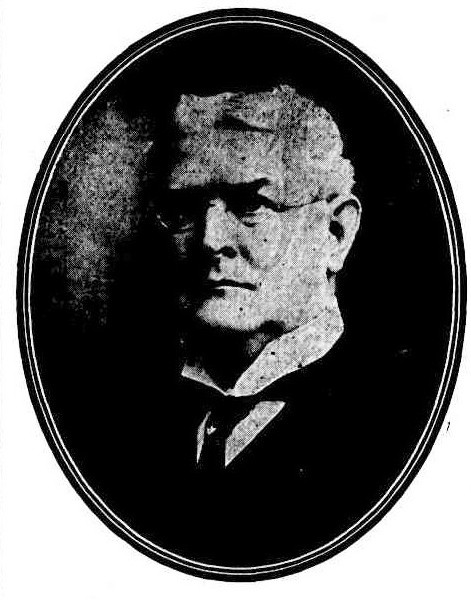 The death took place at an early hour yesterday morning of Mr. John Hughes, M.L.C., the well-known city solicitor, who has been prominently Identified with public life In the State tor many years past. The cause of death is believed to have been heart failure.
The death took place at an early hour yesterday morning of Mr. John Hughes, M.L.C., the well-known city solicitor, who has been prominently Identified with public life In the State tor many years past. The cause of death is believed to have been heart failure.
The late Mr. John Hughes was apparently In the best of health up to Tuesday evening, and the many residents of North Sydney who saw him making his way homeward on Tuesday night to Rockleigh Grange, Ridge-street, North Sydney, were amazed yesterday morning when the news of his death was circula ted. Mr. Hughes was apparently of a very robust constitution, and always looked the picture of health. On Tuesday night, how-ever, he suddenly took a bad turn about 9
o'clock, but after attention recovered, and appeared quite well again. He retired to bed early and slept well, but at 4.30 yesterday morning he had a second seizure, and almost before the members of his family could gather round his bedside, he passed away. Deceased leaves a widow and eight children. Mrs. Hughes was a daughter of the late Dr. Gilhooley, of Sydney.
Business men in the city and the late Mr.Hughes' parliamentary confreres were shocked and deeply grieved when they heard of his death, as, although he had been suffering from asthma for some time past, such a serious and sudden development was not feared.
The commanding figure of Mr. Hughes, with his crown of silvery white hair above a cleanly-moulded face, has long been a familiar one in Sydney. As a public man he gave much of his time to his native State in politics, municipal affairs, and also In his Church. He was born in Sydney, where his father was a merchant, in 1857. He was sent to England for his education In 1870, and was a student at Stonyhurst College in Lancashire, whence he matriculated with honours at the London University six years later. On returning to Sydney he took up the profession of law, and In 1884 was admitted as a solicitor, and immediately commenced practice. The well-known Arm of Hughes and Hughes, the partner being his brother, Mr. Thomas Hughes, M.L.C., was established in 1887.
Politically Mr. Hughes was esteemed as a fair and straightforward man. In the Legislative Council, to which he was nominated In1895, he was distinguished for his assiduous attention to business and his unfailing courtesy. He never spared himself in the discharge of his duties, and he enjoyed the absolute respect and confidence of all members. Three years after taking his seat in the Council ho Joined the Reid Ministry as Vice-President of the Executive Council, and representative of the Government in that chamber, and In July, 1899, he became Minister for Justice. In 1904, on the formation of the Carruthers Ministry, he again assumed the former office. Those who have been his colleagues In the strenuous times of political life speak of him as one of the most loyal and considerate of colleagues. He was invariably observant of the opinions of all with whom he was engaged, and the amount of time and industry he devoted to his duties is only known to those who wore associated with him. To work with him was to his colleagues a pleasure. "He was a type of public man we can ill afford to lose, unselfish, patriotic, and loyal to the core. Personally I feel that by his death I have lost one of my best friends, and the country has been deprived of one of Its best citizens," said his close associate, Mr. Garland, M.L.C., yesterday. In addition to the Parliamentary services mentioned he served on the Public Works Committee, being elected as a Council representative in 1901.
In the affairs of the city he held office as an alderman for three years. He was the representative of the Fitzroy Ward from 1891 to 1894.
Notwithstanding the Inroads on his time caused by political and municipal interests he did not stint himself In regard to other calls. St. Vincent's Hospital had the benefit of his work as honorary treasurer from the year 1885. He was also a trustee of the Public Library from 1898, and a director of the Australia Hotel Company- Some time ago he received the decoration of Knight Commander of St. Gregory the Great from Pope Pius X. He was one of the trustees of St. Mary's Cathedral.
He was a deep student of history---in fact, reading of that class of literature might be said to have been his hobby. He played golf moderately and was one of the trustees of the …. Golf club. THE LATE MR. JOHN HUGHES, M.L.C . DEATH OF HON. JOHN HUGHES. (1912, December 19). The Sydney Morning Herald (NSW : 1842 - 1954), p. 5. Retrieved from http://nla.gov.au/nla.news-article15384434
SIR THOMAS HUGHES. Death Announced. OUTSTANDING PUBLIC CAREER.
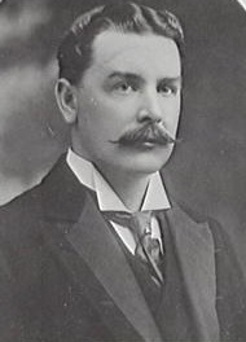 Sir Thomas Hughes, M.L.C., the first Lord Mayor of Sydney, and a prominent figure in the business community of Sydney for many years, died at a private hospital yesterday morning, after a long illness. He was in his 67th year, and his death marks the close of a very active career.
Sir Thomas Hughes, M.L.C., the first Lord Mayor of Sydney, and a prominent figure in the business community of Sydney for many years, died at a private hospital yesterday morning, after a long illness. He was in his 67th year, and his death marks the close of a very active career.
The second son of the late Mr. John Hughes, K.C., S.G., of Elizabeth Bay, Sir Thomas Hughes was born in Sydney, and was educated at Stonyhurst College, England, and at the University of London, where he matriculated in 1880. After spending more than a year in European travel, he returned to Australia, and entered on the study of law in 1882, being admitted to practise as a solicitor in 1887.Thereupon he joined his brother, the late Mr. John Hughes, M.L.C., in partnership.
Sir Thomas made his first incursion into politics in 1898 in support of the cause of Federation, and in the following year he ac-companied Sir George Reid, then Premier of New South Wales, as his secretary, to the conference of Premiers in Melbourne, which brought about the modifications of the original draft of the Federal Constitution that were required before the people of this State would accept it. In 1898 he also acted as secretary to the representative of the Government in the Legislative Council.
Right: 1902, English, Photograph edition: Alderman Sir Thomas Hughes [1898-1912] Mayor 1902, Lord Mayor 1902, 1903, 1907-1908 - from City of Sydney Archives, Image: NSCA CRS 54/339
He was first elected as an alderman of the City Council for Bourke ward in 1898, and sat until 1912, Upon the granting of Royal Letters Patent in 1902 he became Sydney's first Lord Mayor, and was re-elected for 1903, 1907 and 1908, having previously occupied the post of Mayor of Sydney.
In 1908 Sir Thomas was appointed to the Legislative Council. He was president of several important Royal Commissions, including the Commissions on City Improvement (1908-09), Sydney Water Supply (1902-03), and the Decline of the Birthrate (1903-04) He was one of the leaders of municipal reform in Sydney when actively associated with municipal government.
Sir Thomas Hughes, who was created a Knight Bachelor in 1915, was connected with a number of commercial institutions, until about a year ago, when, owing to ill health, he retired from active business. He had occupied the positions of chairman and man-aging director of the Australia Hotel Co.,
Ltd., director of the Commercial Banking Company of Sydney, Ltd., chairman of directors of S. Bennett, Ltd., chairman of directors of Toohey's, Ltd., and a director of Washington H. Soul-Pattinson and Co., Ltd. He was a member of the board of the National Mutual Life Association of Asia, Ltd., and of the Sydney board of the London and Lancashire Insurance Co., Ltd. He was also chair-man of directors of Amalgamated Wireless(Asia), Ltd., until the agreement with the Commonwealth Government was made, when he resigned.
In 1902-3 Sir Thomas Hughes was a member of the New South Wales Board of Health, and he was again a member in 1907 and 1908,He was a councillor of the Women's College, within the University of Sydney. A leading Roman Catholic churchman, Sir Thomas wassecretary of the first and third Australian Catholic Congresses in Sydney, in 1900 and1909. In recognition of his services to the Church, the Pope honoured him with a knighthood of the Order of St. Gregory. He was an Officer de L'Instruction Publique de France, and an officer of Polish Palonia Restituta.
Sir Thomas Hughes was a strong advocate of better Empire wireless communication, and on more than one occasion he emphasised Australia's disabilities in that regard. He was a distinctive and highly respected figure in the Legislative Council, where he brought to bear on many important measures the ripe experience and sound judgment of one who had devoted much time to public affairs.
Lady Hughes, who survives him, was formerly Miss Louisa Gilhooley, and is the second daughter of the late Dr. J. C. Gilhooley. A son, Captain Roger Forrest Hughes, was killed in action in France. The second son, Captain Geoffrey Forrest Hughes, M.C., A.F.C., is the senior partner of the firm founded by his father, Messrs. Hughes, Hughes, and Garvin. He is also president of the Aero Club of New South Wales.
A Requiem Mass will be held at St. Canice's Church, Roslyn-street, Darlinghurst, at 9 o'clock this morning, and the cortege will leave for Waverley Cemetery about a quarter to 10o'clock.
PREMIER'S REGRETS
"The name of Sir Thomas Hughes has for many years been prominently associated with the public life of New South Wales," said the Premier (Mr Bavin) yesterday, "and both the Commonwealth and the State will be the poorer because of his death. He will be particularly missed in the Legislative Council, where his counsels and mature judgment on problems of the day were of the greatest value. Sir Thomas rendered equally distinguished service to the State in the municipal and commercial spheres of activity. He held the distinction of being the first Lord Mayor of Sydney, and during his year of office following his elevation to that position, as well as during the three subsequent occasions on which he held that responsible post, he conducted the affairs of the City Council with outstanding dignity and ability." SIR THOMAS HUGHES. (1930, April 16). The Sydney Morning Herald (NSW : 1842 - 1954), p. 22. Retrieved from http://nla.gov.au/nla.news-article16664060
The son Sir Thomas and Lady Louisa Hughes tragically lost as a child:
HUGHES.-November 7, 1888, at 91, Macleay-street, the wife of Thomas Hughes, of a son. Family Notices. (1888, November 22). The Sydney Morning Herald (NSW : 1842 - 1954), p. 4. Retrieved from http://nla.gov.au/nla.news-article13704487
HUGHES. —February 22, 1894, at Kincoppal, Elizabeth Bay, Tom, elder son of Thomas and Louisa Hughes, aged 5 years. Family Notices. (1894, February 23). The Sydney Morning Herald (NSW : 1842 - 1954), p. 1. Retrieved from http://nla.gov.au/nla.news-article13941824
Death of Australian Pioneer Aviator
Mr. Geoffrey Forrest Hughes, of Rose Bay, who died on 13th September, aged 56, was a member of a distinguished Catholic family, a leading figure in legal and commercial circles, and a pioneer in the Australian flying movement.
In 1929 he was made a Privy Chamberlain of Sword and Cape by Pope Pius XI. Born in 1895, he was the youngest son of the late Sir Thomas Hughes, K.C.S.G., M.L.C., and the late Lady Hughes. He married Margaret, daughter of the late Rev. G. S. S. Vidal and Mrs. Vidal, of Barnsley Rectory, England, and is survived by his widow and children, Thomas, Constance, Geoffrey and Robert. He was educated at St. Ignatius College, Riverview, from 1907 to 1913. In 1911 he travelled with his parents in England and Europe, and was received with them in private audience by His Holiness the Pope. In that year he attended with his parents the Coronation of King George V. In 1915 he applied to enlist in the Australian Flying Corps, but as he was not accepted he travelled to England and joined the Royal Flying Corps. He served with distinction both as combat pilot and as an officer in France and as an officer in charge of flying instructors in the 21st Wing at Oxford. He was awarded the Military Cross for gallantry. He returned to Australia in 1919,and in 1923 gained his LL.B. degree with first class honours at Sydney University, having previously graduated as a Bachelor of Arts. He then joined his father in the firm of Hughes and Hughes, as solicitors. His public work was mainly in connection with flying. Feeling that in the event of a second world war Australia would need a reserve of trained pilots, he became actively associated with the Royal Aero Club of N.S.W. as a member of its commit-tee from the time of its inception. He was president of the Royal Aero Club of N.S.W. from 1925 to 1934. Pilots trained by the Aero Club movement played a most important part in Australia's contribution to the Empire Air Training Scheme when war came in 1939.
At the personal request of the then Chief of Staff of the R.A.A.F., he joined that service in 1940, and again took up the work of training pilots by founding and commanding No. 8 Elementary Flying Training School at Narrandera. His ability as an organiser was responsible for the founding of the Elementary Flying Training School here on a sound basis, and many of those trained under his supervision will have kindly memories of their contact with him. He later became second in command of No. 2 Training Group, which controlled all training in New South Wales, Queensland and Victoria. Upon returning lo civil life he took an active interest in ex-serviccmen's organisations and rehabilitation. He became a Councillor of Sancta Sophia College in 1948. At the time of his death he was senior partner in the firm of Hughes, Hughes and Garvin, solicitors; chairman of directors of Tooheys Ltd.; deputy chairman of the Commercial Banking Company of Sydney Ltd., and a director of the United Insurance Company Ltd., and the Australia Hotel Company Ltd. Requiem Mass was celebrated atSt. Mary Magdalene's Church, Rose Bay, by the Rev. Father M. Scott, S.J., and the burial rites were performed by the Right Rev. Monsignor R. J. O'Regan, P.P. His Grace Arch-bishop Eris O'Brien attended the Requiem Mass, representing His Eminence Cardinal Gilroy. Death of Australian Pioneer Aviator. (1951, October 4).Narandera Argus and Riverina Advertiser (NSW : 1893 - 1953), p. 1. Retrieved from http://nla.gov.au/nla.news-article101626866
ARCHITECTURE. Impressions Abroad.
"Situated far from the great architectural centres of the world, Australians have not yet seen much of the new styles which have been Introduced into Europe following the Great War," said Mr Gilbert Hughes, of Messrs Gilbert Hughes and Molony, on his return to Sydney by the Orford yesterday
Practically every aspect of architecture had been influenced by the new spirit, he said Many beautiful buildings had been erected. Perhaps the greatest of these in Europe was the Stockholm Town Hall, with its great terrace leading down to the waterfront and its huge golden banqueting hall Stockholm had not Sydney’s advantages, but made better use of its opportunities The fine buildings of Sydney, St Mary's Cathedral, St Andrew s Cathedral, and the University buildings, had been placed where they could not be seen to advantage Even the Town Hall would have gained dignity if it had been placed at Port Macquarie, but that site had been used as a tram shed
Mr Hughes said that the many new churches in England followed traditional design, but the tremendous Liverpool Cathedral was a work of genius Although Gothic in conception it was modern in spirit, and there was no shred of ' dead copyism ' about It. Church design in France and Germany had resulted in queer concrete structures, which would appeal to those interested In Cubist pictures and Epstein's sculpture
The designs of modern commercial buildings abroad showed a complete departure from established practice The trend was most evident in Germany, where the buildings gave a sense of vertical height in spite of their great mass Many designs were un-deniably clever and successful for the purposes for which they were built, but they lacked the dignity of older structures Eng-land maintained her superiority in domestic architecture There simplicity was the key-note both Inside and outside the buildings Colours and textures of the materials were used to the utmost to aid Interior decoration. Colours were used fearlessly People wanted fewer and fewer ornaments, and these few were usually bought for their decorative value. In outer London miles of tedious semi-detached villas, called "bungaloids," had been erected, but the builders had now realized their mistake, and a better class of home was being built
In no place during his travels did Mr Hughes see buildings more suitable to Australian conditions than In Spain An adaptation of the ordinary Spanish house would he thought be ideal for the Australian climate. People were perhaps inclined to be suspicious of the Spanish style, after seeing the horrible Californian adaptation, tortured with purposeless iron grilles, gaudy paint, variegated tiles and eccentrically placed plaster, but a simple combination of the traditional form of interior decotation and the "xterior of Spanish houses could not be matched for this country by any other architecture. ARCHITECTURE. (1930, December 4). The Sydney Morning Herald (NSW : 1842 - 1954), p. 8. Retrieved from http://nla.gov.au/nla.news-article16735844
Gilbert Hughes (born 1896) met his wife Gladys (born 1898) through designing and overseeing a cottage she commissioned at Northbridge and unfortunately tragically lost her after only a few years:
For Southern Wedding. Miss G. I. Williamson, the well known artist, photographed prior to returning to Sydney, where her marriage to Flying Officer Gilbert Hughes, R.A.A.F., will take place In the Archbishop's Chapel at St. Mary's Cathedral on December 6 at 6.30 p.m. Miss Williamson, who has frequently exhibited with the Royal Queensland Art Society, left some years ago to make her home In Sydney where she has done exceedingly well in the art world. She was among the exhibitors at the recent Contemporary Art Show. Her new home, which has been designed by her husband, who is an architect, is at Mona Vale. Miss Williamson who has been paying a brief visit to Brisbane will continue painting after her marriage. For Southern Wedding. (1941, November 25). The Telegraph(Brisbane, Qld. : 1872 - 1947), p. 9 Edition: CITY FINAL LAST MINUTE NEWS. Retrieved from http://nla.gov.au/nla.news-article172350586
HUGHES— WILLIAMSON.— In the Archbishop's Chapel, St. Mary's Cathedral, Sydney, this evening, Miss Gertrude Irene Williamson, a Queensland artist, who has been living for some years in Sydney, will be married to Flying-Officer Gilbert N. Hughes, R.A.A.F. The bride, who is the younger daughter of the late Mr. Arthur Wiliamson, and the late Mrs. Graham Shaw, Brisbane, will be given away by her step-brother, -Mr. Graham Shaw, who, with their sister, Miss Alma Williamson, will fly from Brisbane today to be present. She will wear magnolia satin with drapings of old Limerick lace to match the 150-year-old veil. The bridegroom is the fifth son of the late Mr. John Hughes, M.L.C., and of Mrs. Hughes. TODAY'S WEDDING CEREMONIES. (1941, December 6). The Courier-Mail (Brisbane, Qld. : 1933 - 1954), p. 7. Retrieved from http://nla.gov.au/nla.news-article41953232
DEATH IN SYDNEY OF MRS GILBERT HUGHES
Mrs. G. I. Hughes, wife of Flight-Lieut. Gilbert Hughes, R.A.A.F., died in a private hospital in Sydney last week following the birth of a son, who is living. A member of a well-known Kangaroo Point family, Mrs. Hughes had made a name for herself as an artist, and as Miss G. I. Williamson was a regular exhibitor with the Royal Queensland Art Society before she went to live in Sydney, where she won success with her studies of Sydney streets and parks. Her studio home on Sydney harbour was a meeting place for many Sydney artists. Her marriage to Flight Lieut. Hughes took place nearly two years ago. DEATH IN SYDNEY OF MRS. GILBERT HUGHES. (1943, November 15). The Courier-Mail (Brisbane, Qld. : 1933 - 1954), p. 2. Retrieved from http://nla.gov.au/nla.news-article42014067
Old Furniture Takes Time to Collect.
"And they lived happily ever after in a house full of beautiful old furniture "
Doesn't that sound like the end of the ideal fairy-tale?
Picture: heavy dark oak chest of drawers, and beside it, a child's nursery chair.
THEN one stops and sighs, "But they must have been very rich!" Old oak in the dresser, willow pattern on the shelves! Visions of mahogany and Chippendale, of Queen Anne and walnut, of tallboys and cabinets, Period Pieces, and Petit Point! ,
But need our dream couple have been so very rich? At any rate, not if they lived a few years ago and had the seeing eye and the courage of their convictions. Of course, if you buy quickly and lavishly, you must seek the well known and reliable experts, and stock your house from their well-authenticated showrooms, and you' are lucky if you can create thus, with a wave of cheque-book and fountain pen, the "period" house of your dreams.
Suppose, however, that you cannot, isn't it almost worth while to put up for a while with the bare essentials, with, one might say, the kerosene case and chintz-curtain variety of furniture, with the lavish use of the paint-pot on kitchen chairs and tables? Then, when a few pounds permit, stalk your walnut or mahogany quarry in some backstreet, and, greatly daring, spend your savings on some battered but beautiful old piece, to be lovingly polished and brought back to life.
And then-start to save up again! Actually it may pay you in the long run, if you consider mere sordid finance For ordinary every-day modern furniture (I don't mean the delightful pieces of good modern designers) has a very limited second-hand value, whereas old furniture has always its market price. I know a couple
in England who, with a quite a limited :income, have gradually furnished their house, as and when they could afford it, with good old furniture. At any moment, even in these bad times, they could sell almost everything in their house for the full sum which they gave for each piece, and sometimes at a largely in-creased value. One could not say that of the average furnished house, and yet they have paid very little more in the long run than for the ordinary every-day modern equipment.
See the treasures to-day in a.tiny little cottage in Vaucluse, where Mrs. Sealy Vidal and her daughter have installed such delightful old "pieces" as they do not still require at Whale Beach. Let her tell you the exciting story of how, with little or no money, but with knowledge, and enthusiastic determination, her family acquired their treasures. You see the old oak dresser, probably a made-up piece with its cottage simplicity overlaid with more aristocratic veneer and inlay, but very lovely nonetheless. You are told that Mrs. Vidal's mother saw it being conveyed to the saleroom on a lorry many, years ago-and chased it, panting, on foot, to bid a few shillings for it.
The lovely old soup tureen was bought at a farm sale in Devon, where its present owner and a neighbouring farmer discovered that they were bidding against each other, though the farmer wanted the dinner service minus tureen, and Mrs. Vidal the tureen only. So it changed hands at 12/6! Guineas would be nearer its mark to-day.
The chairs are the real financial coup! Pour Chippendale mahogany dining-room chairs emerged from an inn parlour near Oxford at 10/ each. Sixty pounds has been offered and refused for them! Behind them in our photograph stands another triumph, an oak country-made Chippendale design rescued from the axe of a country-woman for 3/, she having cut up some of its brothers for firewood!
A country cottage provided another solid memory of the past, the heavy dark oak chest of drawers, ornamented only with its own mouldings! As decoration. 'Beside it stands a delicious treasure
(Right.) An old oak dresser carries its complement of priceless old china,- including a soup tureen bought at a farm sale in Devon.
A walnut chest, picked up in an old shop in Bideford, and on it a pair of old Dutch spirit jars.
a child's nursery chair, on which its former owner, who died at 90 many years ago, had sat everyday of her walking life to put on her shoes. Even children found its hardy beauty impossible to destroy. While we're on the subject of chairs, what about the many delightful oak wheel-backed chairs, discovered in an old loft, discoloured, dusty, and battered, not so many years ago?
By the way, a loving restorer of old furniture told me years ago that to bring back colour, patina, and polish to mishandled wood, only patience and time would serve. No strong polishes, no terrific expenditure of elbow-grease! Once a week a gentle rub with some good wax, almost a caress, and then leave the wood to rest a week, and so, again and again for years if need be.
An inlaid writing desk, which is a. converted spinet, holds another treasure, an old doctor's store cupboard, complete with its original flasks and little drawers for pills.
Imperceptibly the wax forms the thinnest of films each week, and at last the full beauty of old age is restored.
To come now to our "drawing-room pieces."
Don't you yearn for the walnut chest, with its unusual swell to its base, and what about the lovely Dutch spirit jars, four of which a shop in Bideford disgorged? In olden days Bideford was a great seaport, and many foreign treasures found their way thither, pawned by sailors and travellers quite ignorant of their true value. Bide-ford also provided the little cabinet which stands on the writing desk (a converted spinet) in ourother photograph. What is it? Why! a doctor's store cupboard, with all the original flasks ' and jars for his drugs, and delicious little drawers for his pills. What child, grown-up or other-wise, could resist the fascination of playing with it?
We haven't room to show you the portraits of the lovely bedroom tallboys, nor of the rather battered table, which looks so ordinary and proves to be so fascinating! It's a genuine actor's table, from who knows what celebrated dressing-room! The lid lifts and discloses a desk which can be propped up at any angle-a little rack carries the script of his role, for last moment study, while tiny drawers hold his make-up, and little move-able trays on arms swing out to hold his rouge pot or cold cream jar. What a precious treasure, what inspiration for our little theatre groups, could one of them beg, borrow, or steal it-or even, purchase it!). ; :; : '
I must stop, though anyone who has ever succumbed to the lure of old furniture will' understand how unwillingly the story ends. Let's save and save! and perhaps the gods will be kind, and provide bargains for us, even us, some day! -G.M.
Chippendale dining-room chairs rescued from an inn parlour near Oxford are just the thing to set round an old mahogany talk.
LITTLE by LITTLE Old Furniture Takes Time to Collect. (1935, June 20). The Sydney Morning Herald (NSW : 1842 - 1954), p. 10 Supplement: Women's Supplement. Retrieved from http://nla.gov.au/nla.news-article29536430
Where the Kookaburras Call Them For Morning Gallops - Derby Colt That Tip-Toes Down a Goat Track
BUSH, BLUE SKIES AND THEN BLUE RIBAND - ON the verdant alpine heights of Whale Bay, nestling its unpretentious self in a forest of giant gums — is what? HUNDREDS of feet below, the foam-flecked combers of the turquoise Pacific bubble their champagne on to silver sands.\WAY in the dim distance, silhouetted against an azure sky, and majestically guarding this picturesque setting, stands Barrenjoey Light. Aloof! Foreboding! Pictures: NO WHALE IN THE BAY at Whale Beach. |—It would take an outsize in Jonahs to knock a beautiful spot like this. FOOTPRINTS IN THE SANDS of .... Whale Beach.
One hadn't to be even a decent sleuth to know that racehorses had been working here.
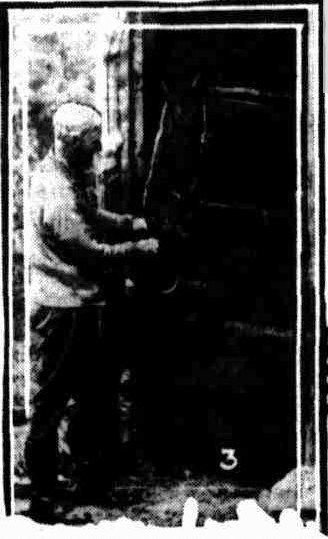 Picture: WHERE horses' appetites are not easily satisfied. Mr.Wrayburn' turns on a lucerne horsdoeuvre.
Picture: WHERE horses' appetites are not easily satisfied. Mr.Wrayburn' turns on a lucerne horsdoeuvre.
STRETCHED out on the alpine heights for 'Truth's' photographer. ONE would naturally think of pigments and palettes with But nothing of the kind It is the temporary home of a potential Derby winner. Just a ramshackle-Joint, but who knows that a Phar Lap is not stabled therein?
Whale Bay! …..?In which to put a Derby proposition through its preliminary paces! 'Truth' got the whisper that a pack of mystery horses were secretly training at this sylvan spot.
ARRIVAL at Whale Bay quickly proved that there was something doing. The placid sands of this picturesque watering resort were criss-crossed and freely marked by horses hoofs, Indicating that quadrupeds and not bipeds had been responsible for gay gambollings on this particular beach. For half a mile deep furrows had disturbed the even surface of the sands. With so much information, 'Truth’ commenced to take a look-see at the surrounding scenery, but rugged mountainous country rising in dizzy heights from one end of the beach to the other, met the eye. Surely no blue-blood thoroughbred would find a home In such uninviting country. It gave the Impression more of a Ned Kelly cache.'Come Right In'
BUT high up on the southern headland a galvanised iron roof glistened. Here were possibilities. After zigzagging up the mountain side, negotiating many pedal hazards, 'Truth' eventually came Into a haven of hospitality and horse-flesh. An Inquisitorial eye was thrown atour approach, but when 'Truth'* was mentioned It was a case of 'Open, Sesame.'' Mr. Wrayburn' proved a perfect host, after we had told him our mission, the silver-haired gentleman. For many years, it appears, he has dabbled in the breeding and racing of thoroughbreds. 'Mr. Wrayburn's' name figures in the Stud Book as a breeder, and his colors have been carried by several horses, including Great Expectations, a colt by Cambysee, who beat Sea Pearl, now running prominently at the 'ponies.' in a two-year-old event at Menangle last year. Camhyses was also raced by 'Mr.Wrayburn,' but It can hardly be said that 'Mr. Wrayburn's' successes have been in keeping with the enthusiasm he lavishes on his hobby. Getting hold of Figconette, an Haut Brion mare, he mated her with Cambysee in 1929, and the resultant progeny, a bay colt who has been named Derby Day, is the horse that piqued 'Truth's' curiosity, and well warranted the trip to Whale Bay. Pep For Colt Derby Day, so far, has not been produced in a race, but his owner Is hopeful that the colt, a hard bay, with a faint star, will take his place in the A.J.C. Derby at Randwick on October 1.'Mr. Wrayburn' is In the habit of spending his week-ends down at his Whale Bay cottage, and decided to put in three weeks' holiday at this health giving rendezvous, and he put it to his trainer, J. Carley, to send Derby Day-down, us it was felt that the climate there, combined with a certain amount of exercise on the beach, would put pep into the colt that would stand him in good stead when he commenced his Intensive training In Carley's care. At the same time, Miss B. V. Jenkins, who is also a patron of Carley, and who visits Randwick with her stopwatch on fast mornings, was prevailed upon to send Prince Pegasus down to accompany Derby Day. The pair were despatched by horse float as far as Collaroy, and the remaining miles to Whale Bay were covered per hoof by the brace of thoroughbreds. It is proposed, when the horses are returned to Sydney next Friday, to prevail upon horse-float proprietor, Bob Battersby, to pick the horses up on the main Palm Beach-road, a short distance before 'Mr. Wrayburn's property. .One of Carley's stable-hands was taken down to do the strapping and riding.
EACH morning Prince Pegasus and Derby Day tip-toe their dangerous way down a goat track which leads from the stables to a lower road and thence to the beach, where the pair are lit through their paces. It is 'Mr. Wrayburn's' opinion that the treatment extended these two horses is proving most beneficial.
'Eat?'?Cannot give them enough to eat,' -said 'Mr. Wrayburn' as he handed Prince Pegasus a fistful of lucerne-hay as the chestnut poked his head over the stall door to take in the picturesque panoramic view of this wonder-sight. So much of an enthusiast is 'Mr.Wrayburn' that he built the wooden shell which serves as a stable for the two horses himself.
The foundation 'stones' (not stone)were hewn out of the mountain-side and carried one by one by 'Mr. Wrayburn.' It must have been a laborious and tedious Job, but it was all done for the love of the horse. So long as such men are associated with the sport, trainers, will experience little difficulty In finding patrons to fill their stables. Unfortunately, however, not many men nowadays are Imbued with the ideals and aspirations of this unorthodox owner and breeder.
IT will be interesting to follow the doings of Derby Day. He looks the right kind of customer. He displays hardiness, with any amount of bone and substance. 'Of course,' said Mr. Wrayburn, 'I won't lose any sleep If the little fellow does not win the classic; in the fete tryouts he had some months ago he acquitted himself in a fashion that was most satisfying to me.' If Derby Day happens to turn out well, open-air treatment for thoroughbreds should become distinctly fashionable.
When Derby Day returns to Kensington on Friday he may form the opinion that It's a drab spot. Yodelling milkmen will wake him and not the Kookaburras. He will miss the roar of the surf and the golden sands.
Where the Kookaburras Call Them For Morning Gallops. (1932, July 24). Truth (Sydney, NSW : 1894 - 1954), p. 5. Retrieved fromhttp://nla.gov.au/nla.news-article169139370
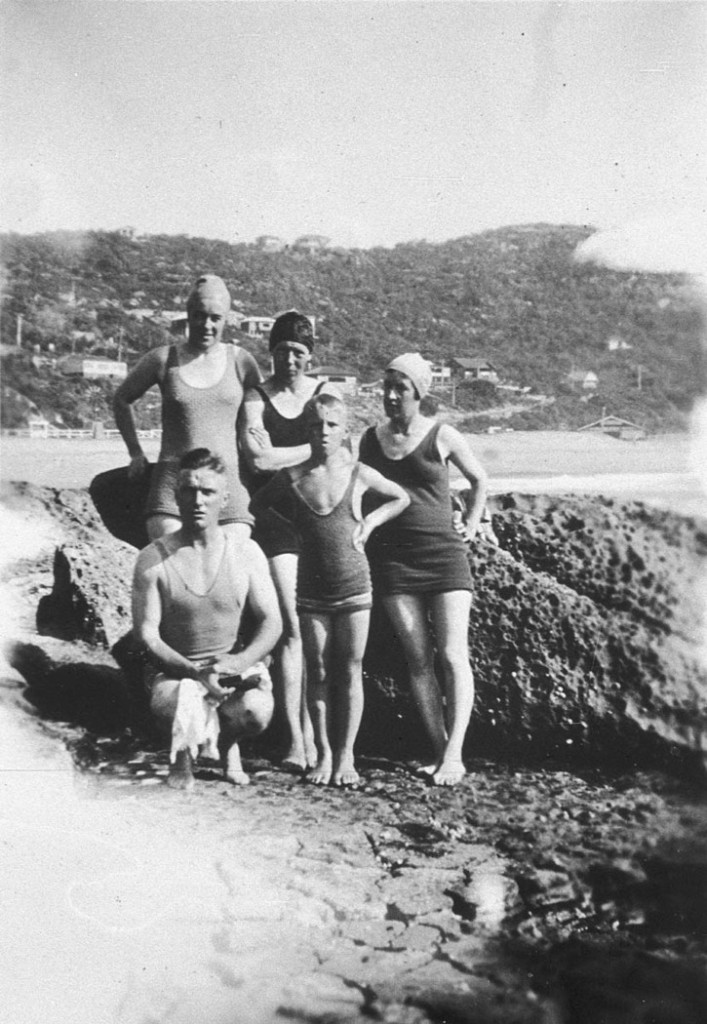
Whale Beach, NSW: Photographed by - Lisle Lewis-Hughes; L to R: H K Lewis-Hughes, Jean Starkey, Marjorie Taylor, J H Lewis-Hughes, Joyce Starkey Image No: bcp_06093, courtesy State Library of NSW
Relais & Châteaux, was established in France in 1954. The Association's mission is "to spread its unique art de vivre across the globe by selecting outstanding properties with a truly unique character."
The group is known for its extremely strict admission standards. In addition to luxurious facilities, members must have special features distinguishing them from chain hotels. Most of them are historic landmarks such as castles, manor houses, or townhouses in idyllic settings and offering exquisite cuisine. Relais & Châteaux is an example of affiliate marketing
Prospective and current members are evaluated by the group's traditional "five C" motto: Caractère, Courtoisie, Calme, Charme et Cuisine. Relais & Châteaux. (2013, December 23). In Wikipedia, The Free Encyclopedia. Retrieved fromhttp://en.wikipedia.org/w/index.php?title=Relais_%26_Ch%C3%A2teaux&oldid=587358085
Jonah's Today: www.jonahs.com.au
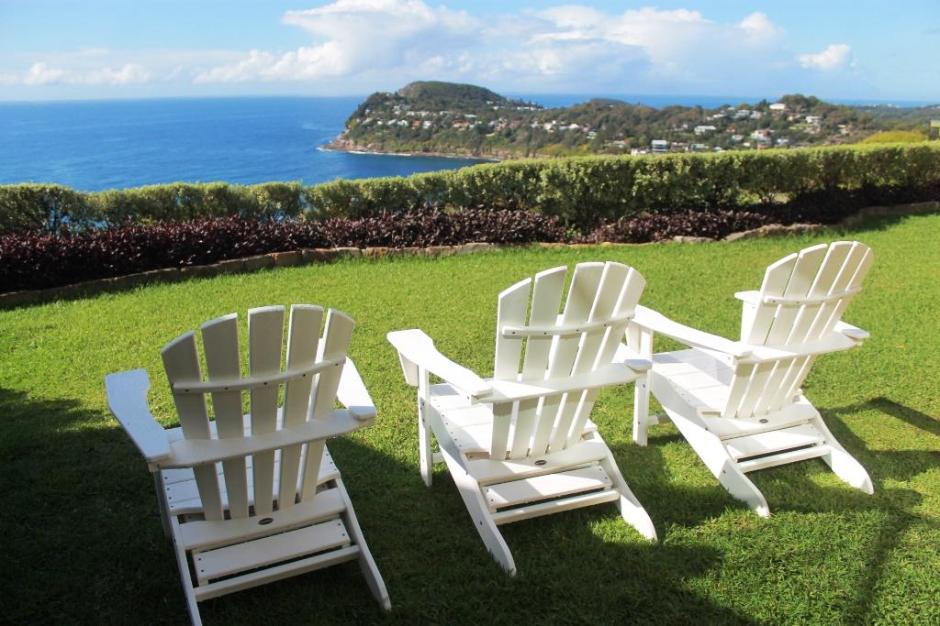
Classic iconic chairs invite you to rest and enjoy a classic iconic Pittwater restaurant you may also stay at - Jonah's
Jonah's Road House - Whale Beach - Restaurants You Could Also Stay In Part I - threads collected and collated by A J Guesdon, 2015.
Archival Photographs courtesy Trove, Jonah's and Avalon Beach Historical Society - Jonah's 2015 coloured photos by A J Guesdon.